Changing the world takes a lot of work, but reformers in New Hampshire in the first half of the 19th century were committed to the idea that they could make life better for others.
As you learn about New Hampshire in this period, think about the following questions:
- How did education reform in the 19th century impact New Hampshire’s people?
- What was life like for Black Americans in the years before the Civil War?
- How did people in New Hampshire and the nation fight against slavery?
Changing the World
What types of problems did reformers try to solve in the early 19th century?
Most Americans believe that we can create a society where all people are treated equally and are free. But our ideas about what it means to be “equal” and what it means to be “free” have changed over time. Today, we expect people to be treated the same no matter what race or gender they are. We also expect that all Americans are free to live as they want as long as they follow the laws and do not harm other people.
But it was not always this way in America. During the colonial period and in the years after the American Revolution, many people were not considered to be equal or free.
Some Black people were enslaved and had to work for white slaveholders. Even free Black people did not always have the same rights as everyone else.
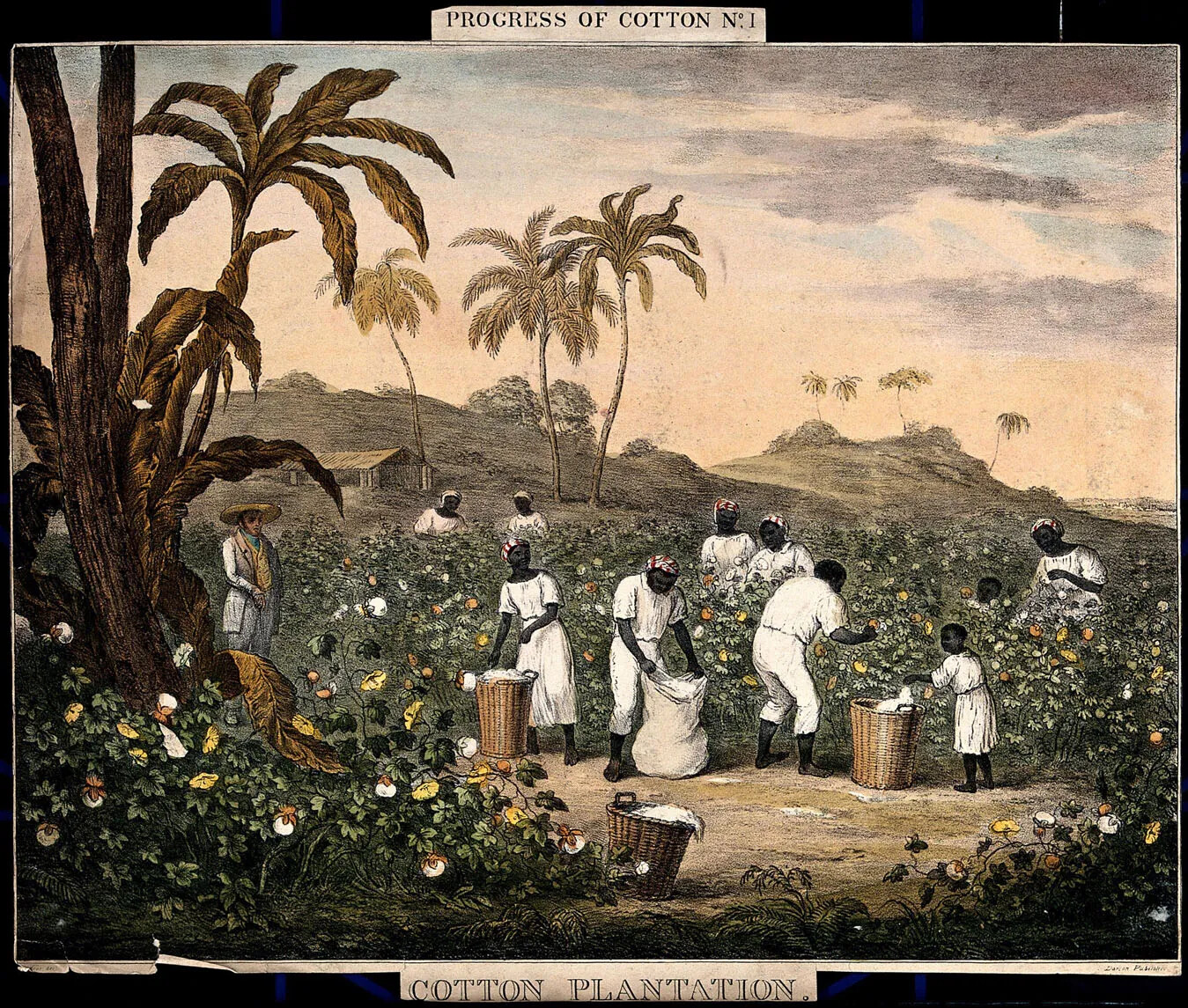
Caption:
Slavery was a labor system in America where Black people were taken from Africa to this country and forced to work for whites. Enslaved people had no freedom and could not leave. When they had children, the children were enslaved too. This image shows plantation slavery, where enslaved people had to work in the fields to plant and harvest a cash crop, like cotton. Slavery in the United States was not outlawed until 1865, after the Civil War, when the 13th Amendment to the U.S. Constitution was ratified.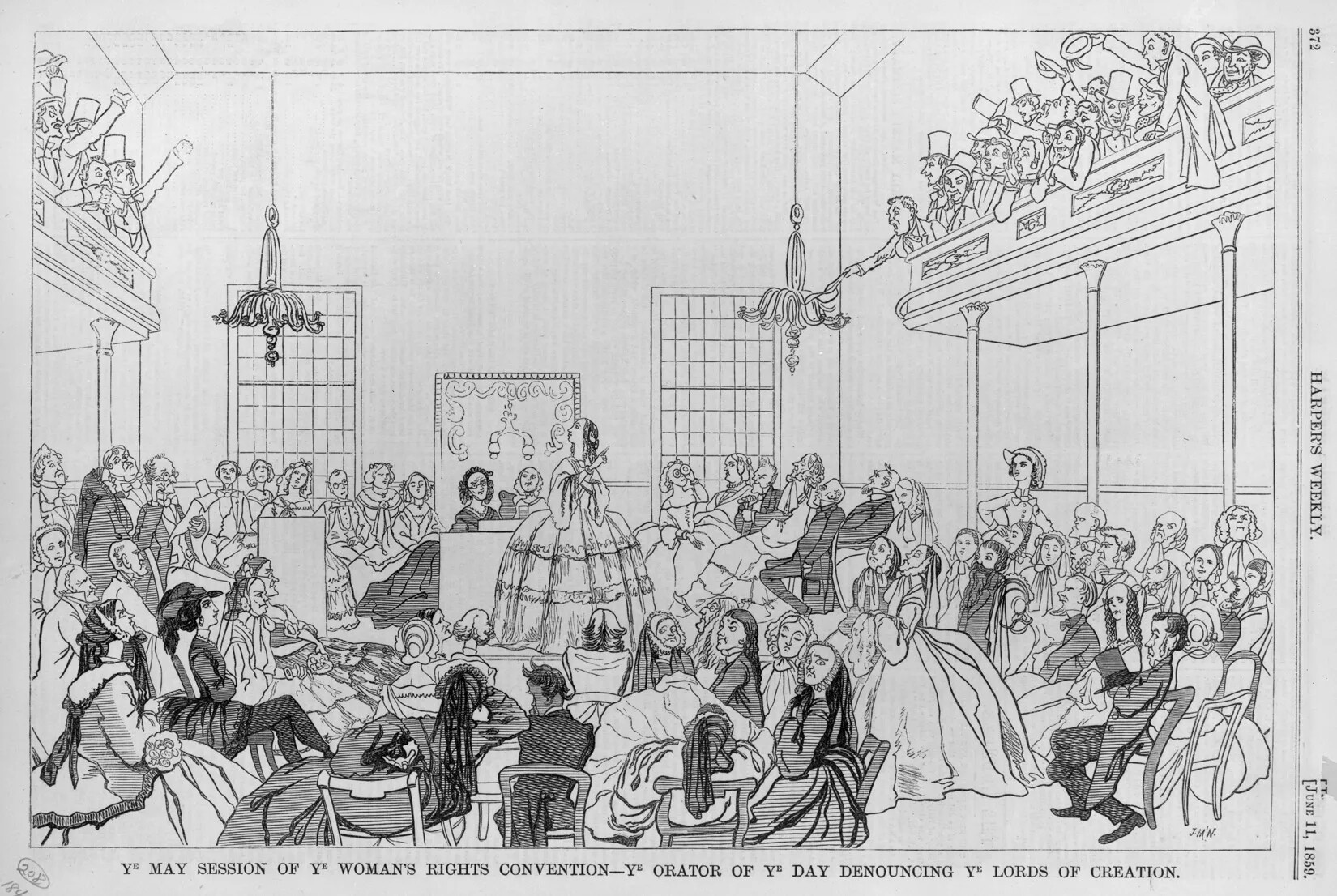
Caption:
Many women got involved with reform in the 19th century. Not everyone agreed that speaking in public and being involved with politics was appropriate for women, though. For example, this newspaper cartoon is making fun of women reformers. It shows a women speaking at a convention, with women in the audience. The men in the balconies are shouting and pointing at them.Women were another group of people who did not have the same rights as men. They could not vote or own property once they got married. The law said that their fathers, brothers, or husbands were responsible for them. Only widows, women whose husbands had died, were free to make their own decisions.
There were also lots of groups of people who needed care but did not always get it. People with disabilities, like being blind or deaf, did not have opportunities to go to school or live independently as they do today. Sometimes they did not even live in good conditions.
People who suffered from mental illness also tended to be treated badly, mainly because doctors did not know very much about mental illnesses then or how to help people manage their mental illness.
People who were poor also did not receive much help back then. Many poor people lived in terrible conditions in crowded neighborhoods without good water or enough food. In many of these neighborhoods, there was a lot of illness and disease.
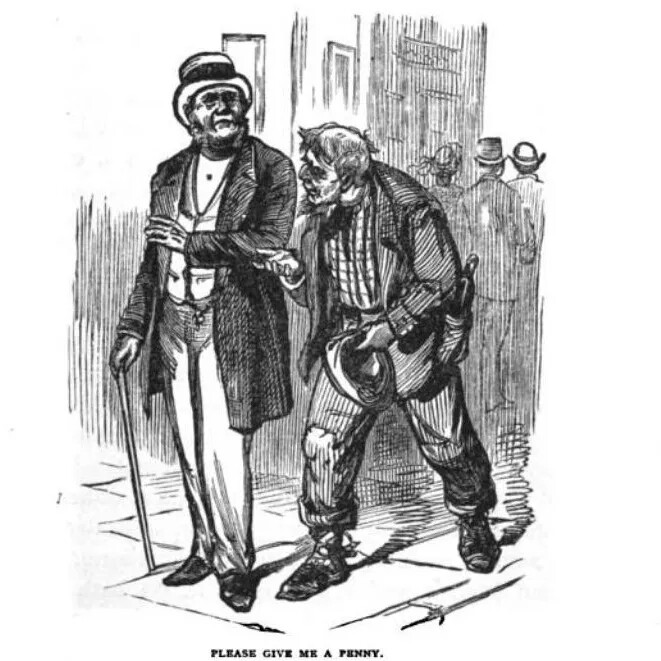
Caption:
During and after the Industrial Revolution, the gap between rich and poor grew larger. This means that generally, rich people became much much richer and poor people became poorer. This book illustration shows a poor man asking a rich man for money.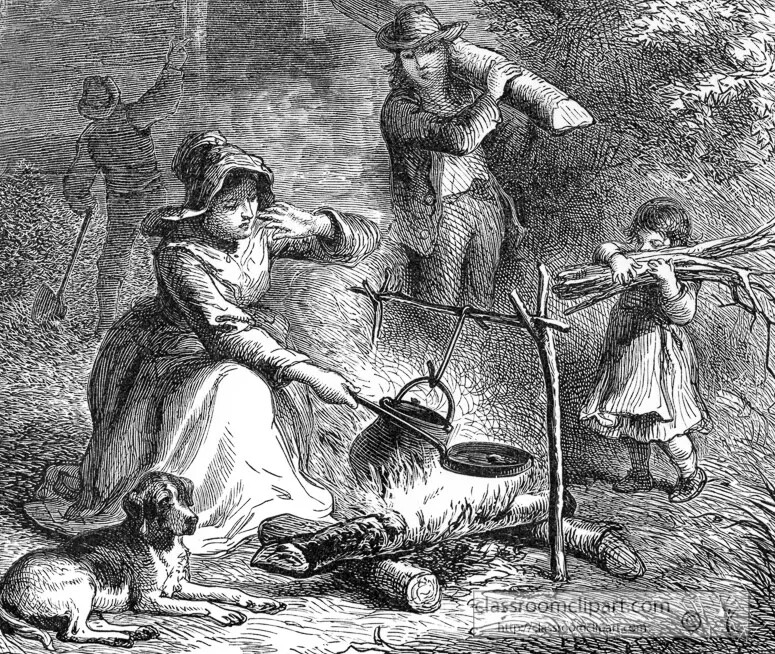
Caption:
In the 1700s and 1800s, there were very few protections for children. Many children had to work on their families' farms or in the new mills and factories. Only a few states had laws that required children to go to school. Children whose parents had died often had to live in orphanages, which were sometimes overcrowded and had poor living conditions. The reformers of the 19th century tried to help children and make their lives better.Many children suffered in America during this period, too. Some were poor; others had a disability; still others had an illness of some kind.
In 1800, many children did not have an opportunity to go to school. Instead, they had to work on their family’s farm. Since they did not go to school, they did not know how to read or write, which kept them from getting good jobs when they were older.
In what ways did reformers try to change the world in the early 19th century?
There were always Americans who tried to solve these problems, but at the beginning of the 19th century, more people than ever decided to devote their lives to making other people’s lives better. They wanted to reform society by fixing the parts of it that did not work very well. These people were known as reformers.
Reformers were inspired by their religious beliefs to try to solve society’s problems. Religion played a very important role in people’s lives during this period. It became even more important for many people in the early 1800s when there were a series of Christian religious revivals that swept through the United States, particularly in New York and New England. Religious revivals are when people decide to make a bigger commitment to religion than they had before. They may begin to attend church more often or make big changes in their lives because their religious beliefs say they should live a different way.
So many people participated in Christian religious revivals in the first decades of the 19th century that new types, or denominations, of religion developed. Other denominations that already existed got bigger as more people committed to their religion.
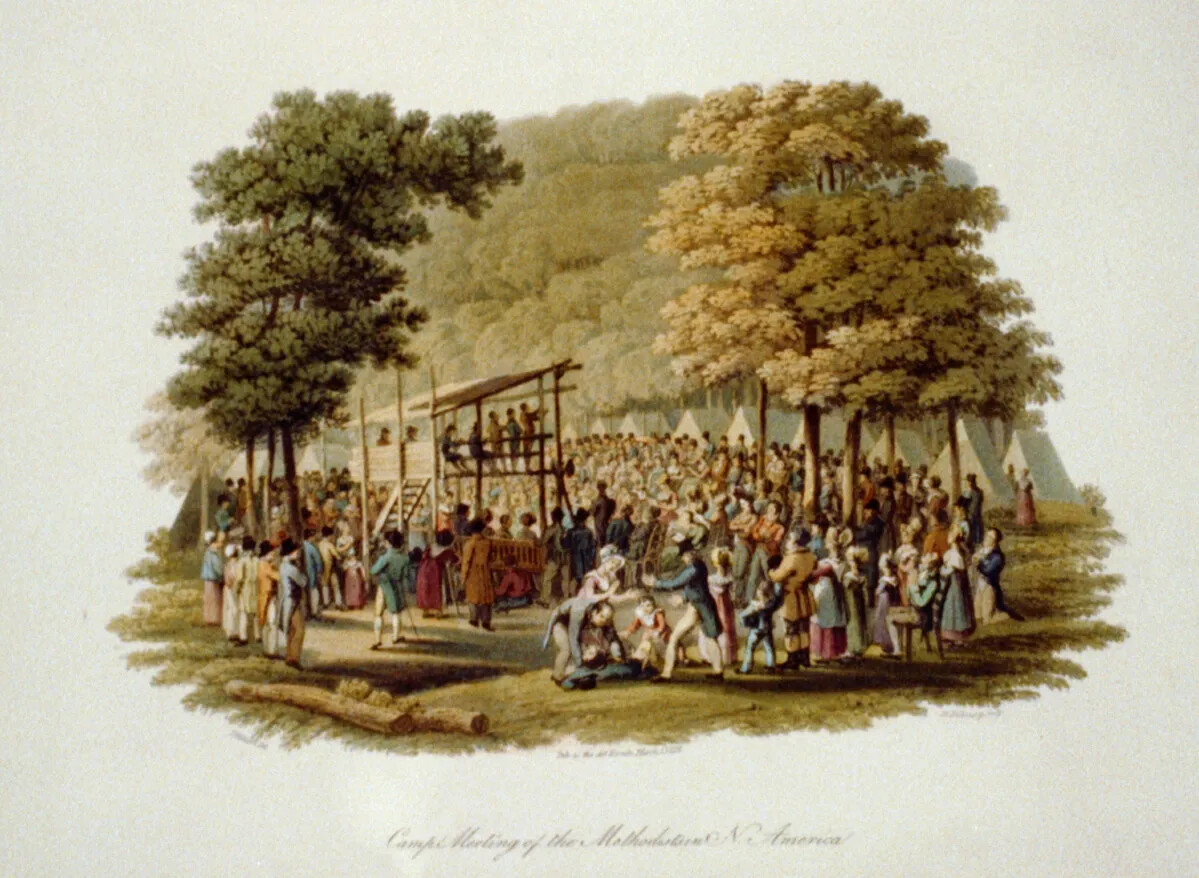
Caption:
Religion was an important part of most Americans' lives in the early 19th century. During this period, a religious revival swept the nation. Many people made a bigger commitment to their religious beliefs. Part of these revivals were camp meetings, like the one in this image. These were large, outdoor meetings, usually in rural areas where there may not be a regular minister. A minister would travel to the place and stay for a few days. People would come from all over and hear the minister preach, sing songs, and pray together.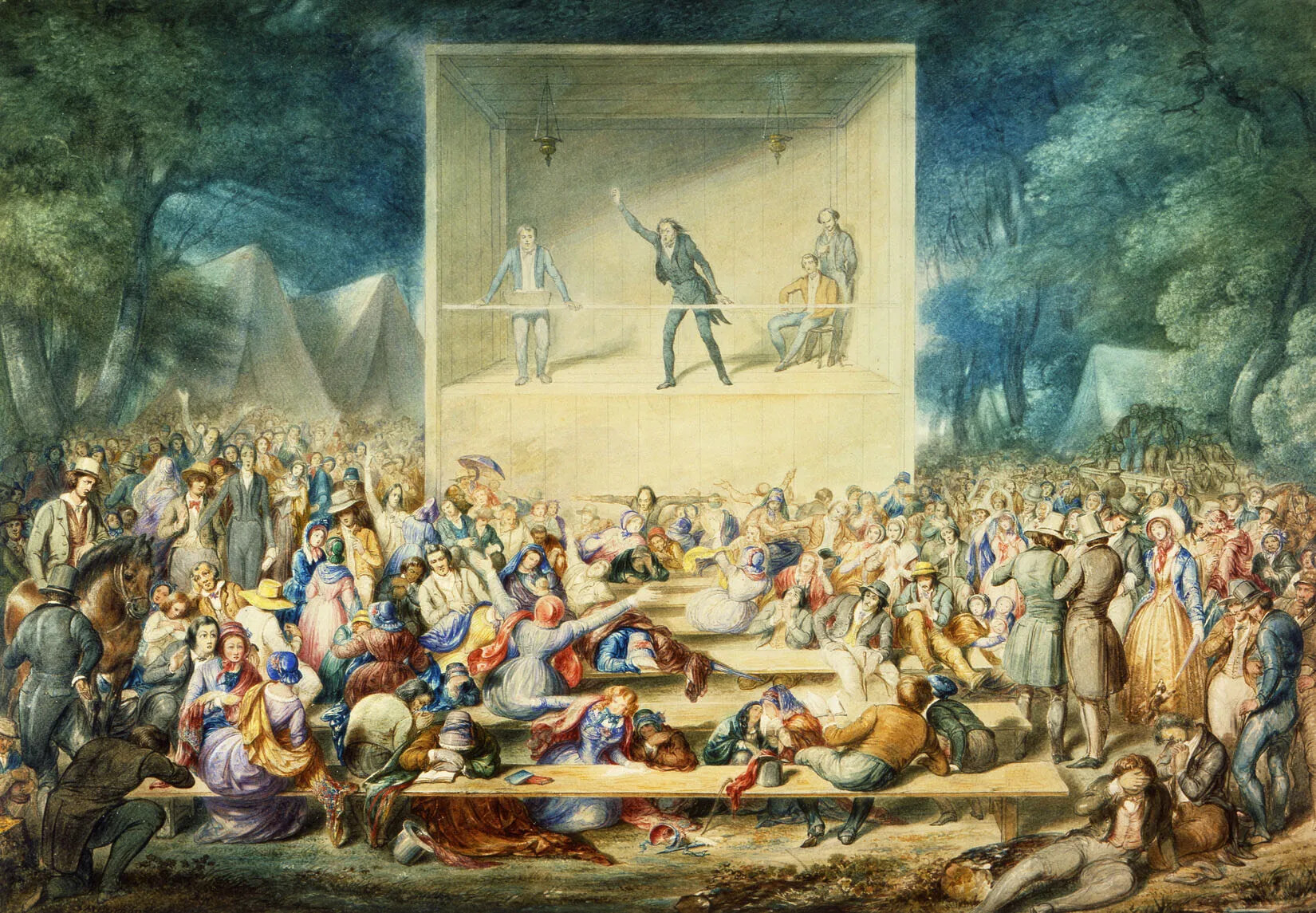
Caption:
Religion was an important part of most Americans' lives in the early 19th century. During this period, a religious revival swept the nation. Many people made a bigger commitment to their religious beliefs. Preachers who spoke at these revivals often encouraged the audience to help solve the problems of society. This painting shows a revival meeting from this time period. What do you notice about the audience members at this revival meeting?Many of the religious revivals of the early 19th century focused on solving the problems that affected society and caring for people who needed help. Religious leaders often said people had a moral responsibility to provide support to others who were struggling with problems. This responsibility was what it meant to be a Christian.
Reformers tried to solve all sorts of social problems by working together. During the early 19th century, people started to form volunteer groups focused on each social problem.
Most of the groups worked to educate other Americans about these social problems. They published articles in newspapers or books. They organized lectures where speakers would explain what the social problems were and how they thought the problems could be solved. They held lots of meetings, both to bring new members into their groups and to organize their activities. The groups also raised money to support their activities.
Sometimes, these groups tried to change laws, but often their main purpose was to change society, which meant influencing the way people thought about social problems.
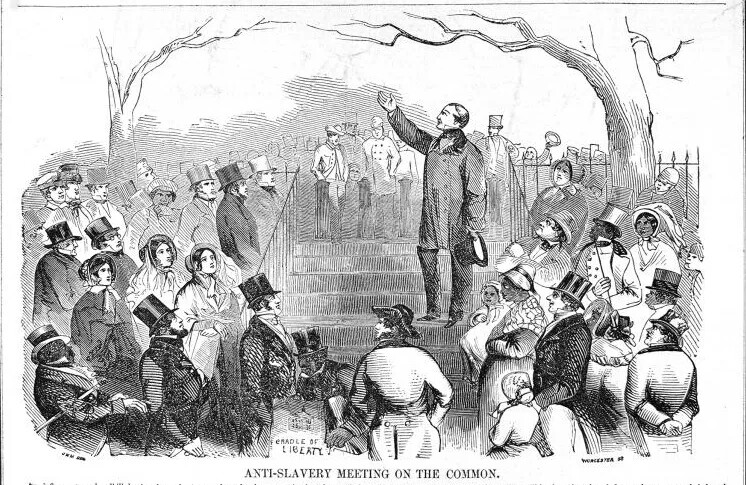
Caption:
Reformers who worked to solve America's social problems in the 19th century tried a number of different strategies. One of their main strategies was educating other people about these problems. They held meetings and gave public talks. This picture is of an anti-slavery meeting held on Boston Common in 1851.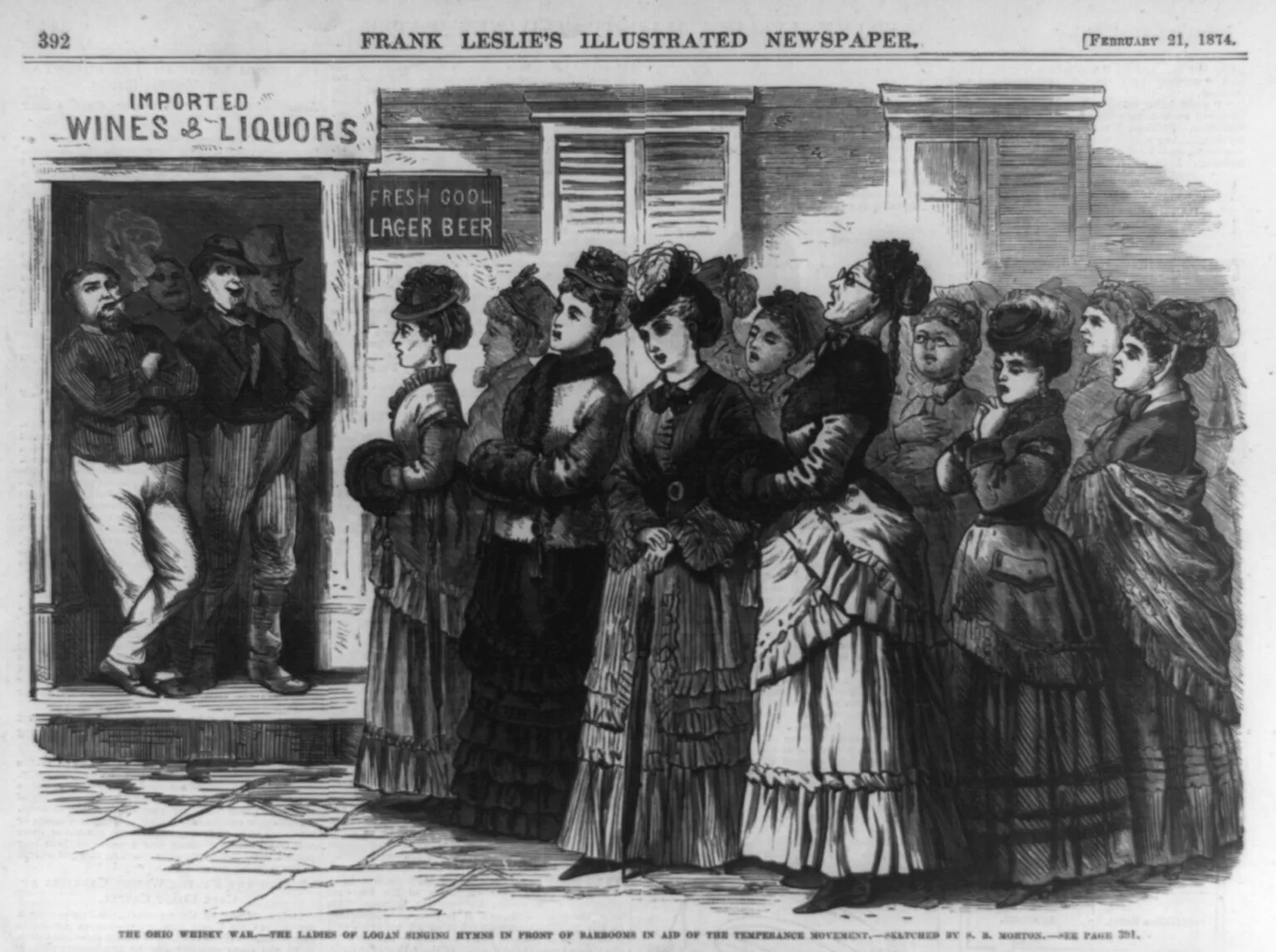
Caption:
These are women reformers in the 19th century. They are singing religious songs called hymns in front of a bar. They are trying to persuade people not to drink alcohol. All different types of people were reformers, but many reformers were from the middle class, like these women.Some reformers worked on many social problems, while others focused on just one or two social problems.
All different types of people were reformers, but most of the reformers came from the middle class. They earned enough money that they had free time to devote to a cause that inspired them.
Both men and women were reformers. For women, though, trying to change the world was a new role for them. Instead of only staying at home to care for their families, reforming women began to volunteer outside the home. For the first time, women became involved in politics, gave speeches, and published their writings on social issues.
Although there were reform movements all over America in the early 19th century, most of them were in the northern states, particularly in New York and New England.
Not everyone agreed with the reformers, though. Many people thought reformers were troublemakers who were trying to disrupt society rather than fix it. Political leaders often did not listen to the reformers or make the changes to the law that reformers wanted. Newspaper editors often wrote articles that criticized reformers and the things they were trying to do.
Many people were uncomfortable with the new role women reformers began playing in society. They believed women should not influence the government and that they should not be involved with social problems because it would be too upsetting for them. People’s ideas about women were very different in the early 1800s from what they are today!
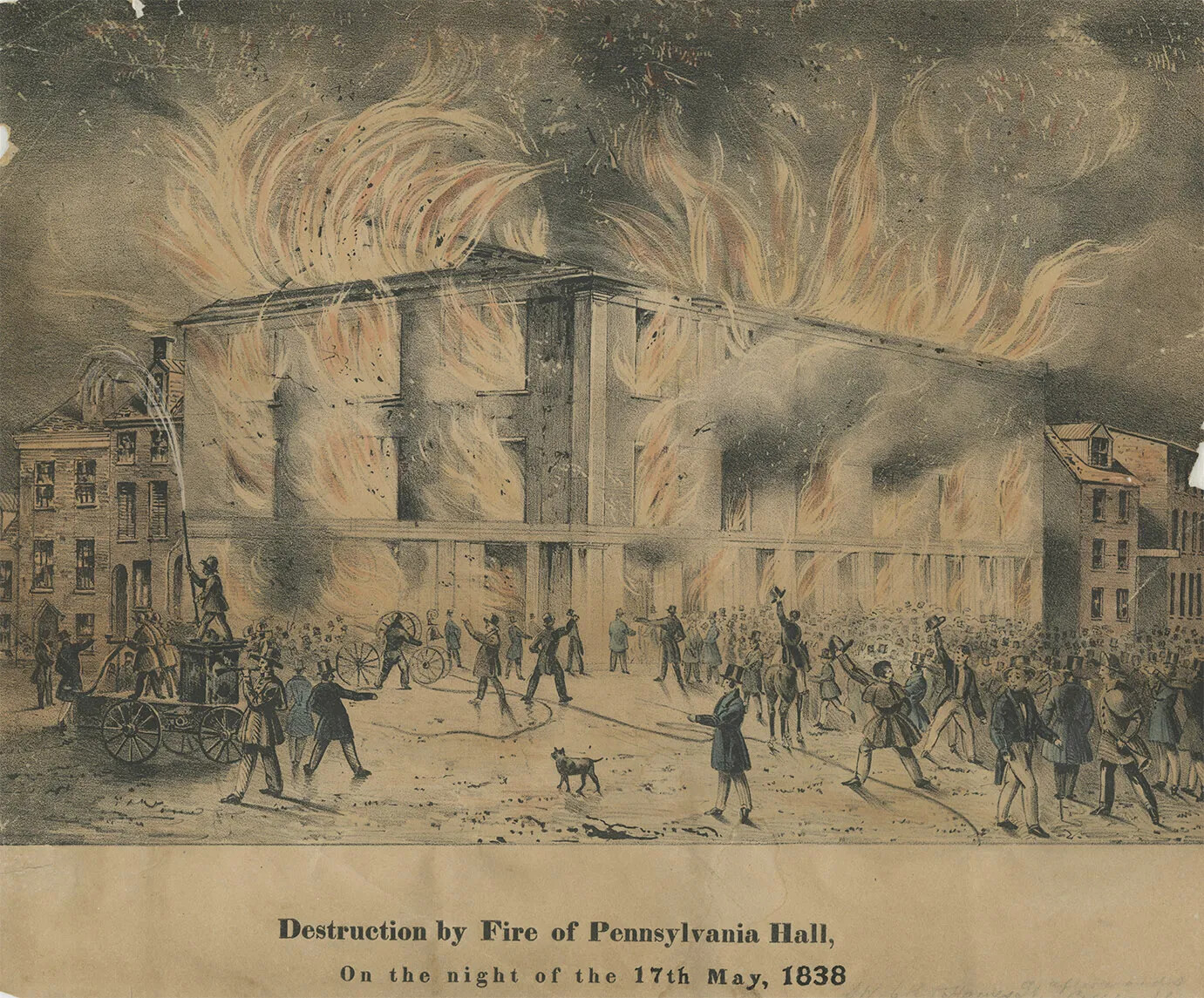
Caption:
During the first half of the 19th century, many Americans tried to fix problems in society, like poverty, slavery, and lack of educational opportunities. These people were called reformers. Not everyone agreed with the reformers, though. For example, many other Americans were angry that reformers wanted to end, or abolish, slavery. These anti-abolitionists were sometimes violent. They burned down this building in Philadelphia just a few days after women antislavery activists held a large meeting, or convention, there.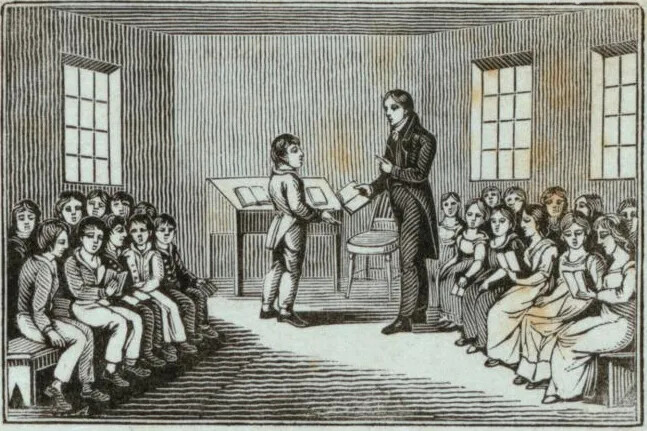
Caption:
Reformers in the 19th century worked together to try to solve society's problems. One of the problems they worked on was education. Many children did not have the opportunity to go to school. Some worked on farms or in factories. White girls often did not receive the same education as white boys. And it was illegal to teach enslaved children how to read or write. So reformers worked to create public schools that were open to all children, called "common schools."Like the rest of New England, New Hampshire had many religious revivals in the early 19th century, which inspired many reformers to try and fix society’s problems.
The rest of this unit focuses on two of the most important reform movements in New Hampshire during this period: the movement to make sure all children received the education they needed, and the effort to end slavery throughout the United States.
Let's Review!
What are the big ideas in this section?
Social Problems
Many people did not have equal rights in 19th-century America, like Black people and women. Other people who needed help, like those who were ill or disabled, were not always treated well.
Religious Revivals
In the early 19th century, many people became more committed to their churches and believed they had a responsibility to help other people lead better lives.
Changing People's Minds
Reformers tried to convince other people to make changes to society by writing books and newspaper articles, making speeches, and holding meetings.
Some People Disagree
Many people thought reformers were troublemakers and did not think society should change. They fought against making changes to the way people were treated.
Reforming Education
How did education change in the early 19th century?
Education has always been important to the people of New Hampshire. In fact, New Hampshire—and all of New England—has been the most educated part of America since the first English settlers arrived in the early 17th century.
During the colonial period, New Hampshire adopted laws that said every child should learn to read. Children needed to be able to read the Bible, because religion was very important to the colonists. At that time, school was held in town meeting houses, which was also where people in the community came together to make decisions about town government. It was also where they held church services for the town. The town meeting house was used for all three purposes—government, church, and school.
The schoolmaster was usually the town’s minister. He taught the children how to read and write while also teaching them about religion. Both boys and girls went to school but only for a few years, just until they could read and write. School was not held every day, either. The minister taught children for just a few hours a week or a month. How often school met was different in every town.
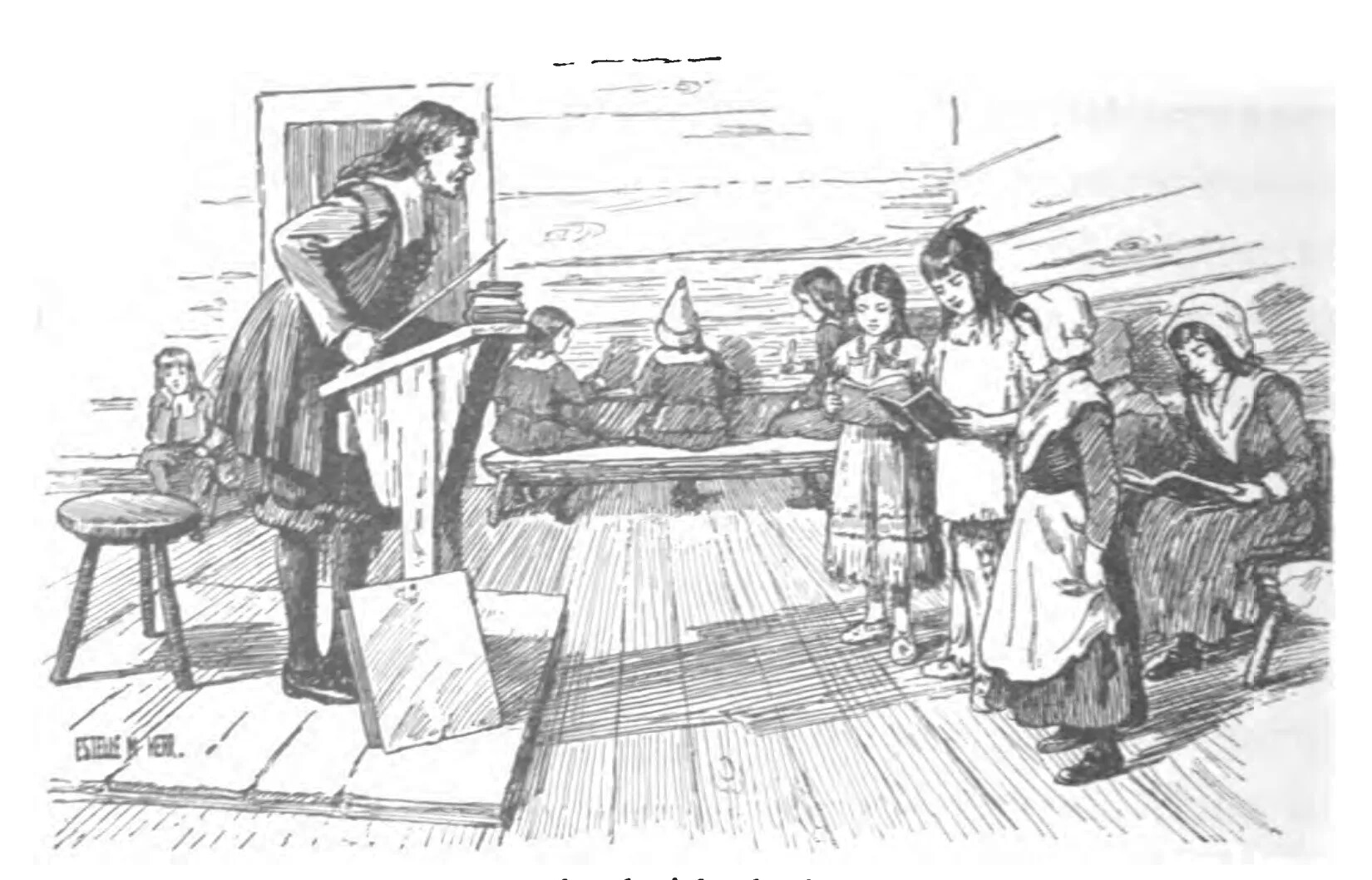
Caption:
New Hampshire communities established schools for children starting in the 1640s. It was important to the settlers that children learn to read, write, and do simple math. Children did not attend school every day because they usually had a lot of chores to do on the farms.In the early 1800s, the state government of New Hampshire decided that children needed to go to school more regularly. They passed laws that said every town had to build separate school buildings and locate them throughout the town so children could walk to school.
Towns all over New Hampshire began building schoolhouses and placed them just a few miles apart so the children could walk to them easily. These buildings were called one-room schoolhouses because there was just one classroom for all the children who attended. All of them would learn together no matter what their age.
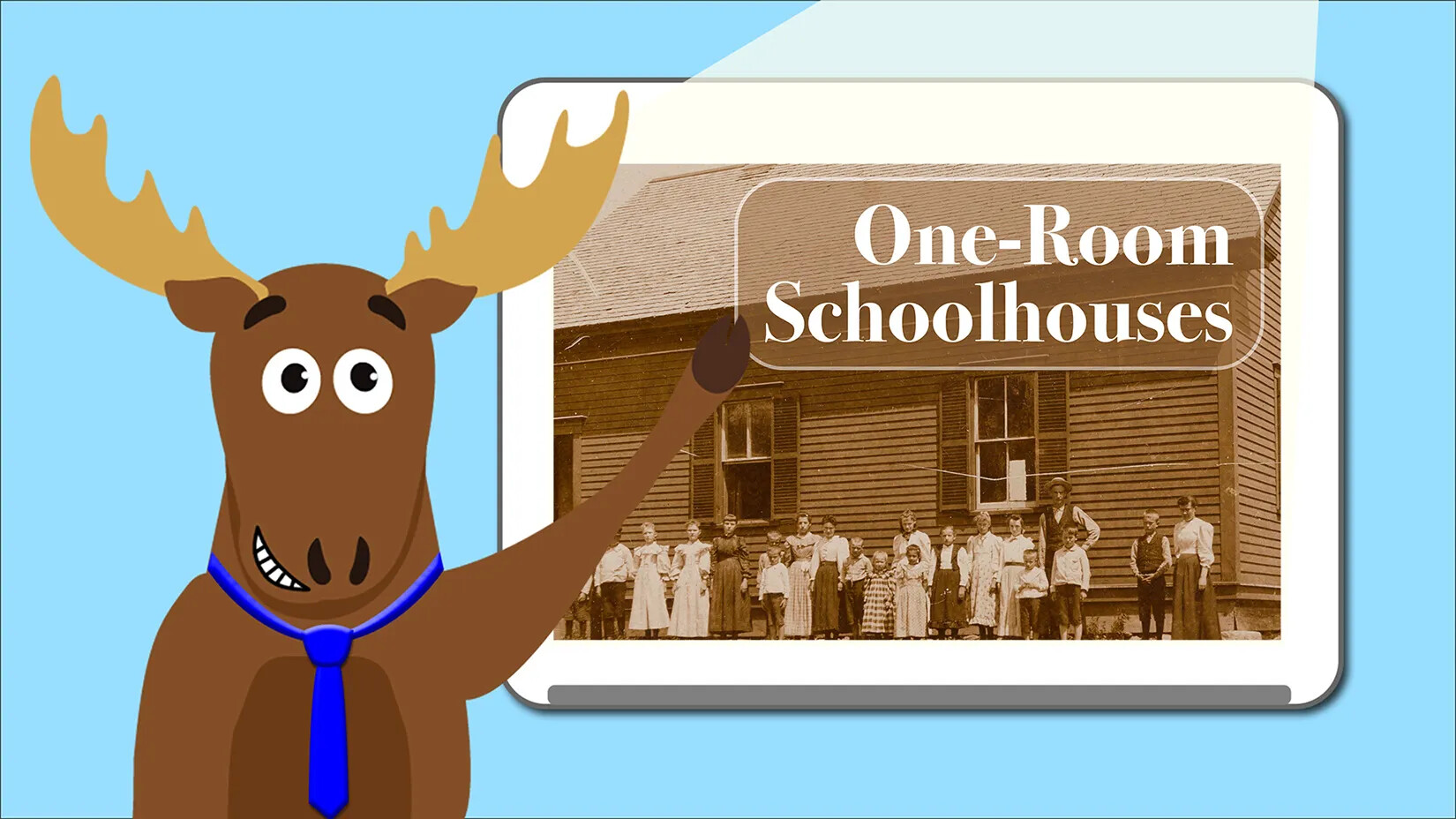
Mason Explains: One-Room Schoolhouses
All of Us Together!
One-room schoolhouses were part of a larger reform effort called the common school movement. The idea was to create schools that would give all students the same experience.
Schools were very important to American democracy . If the people were going to govern themselves, then each new generation needed to learn about the country and what it meant to be an American. Schools were expected to teach children what they needed to know to become good citizens.
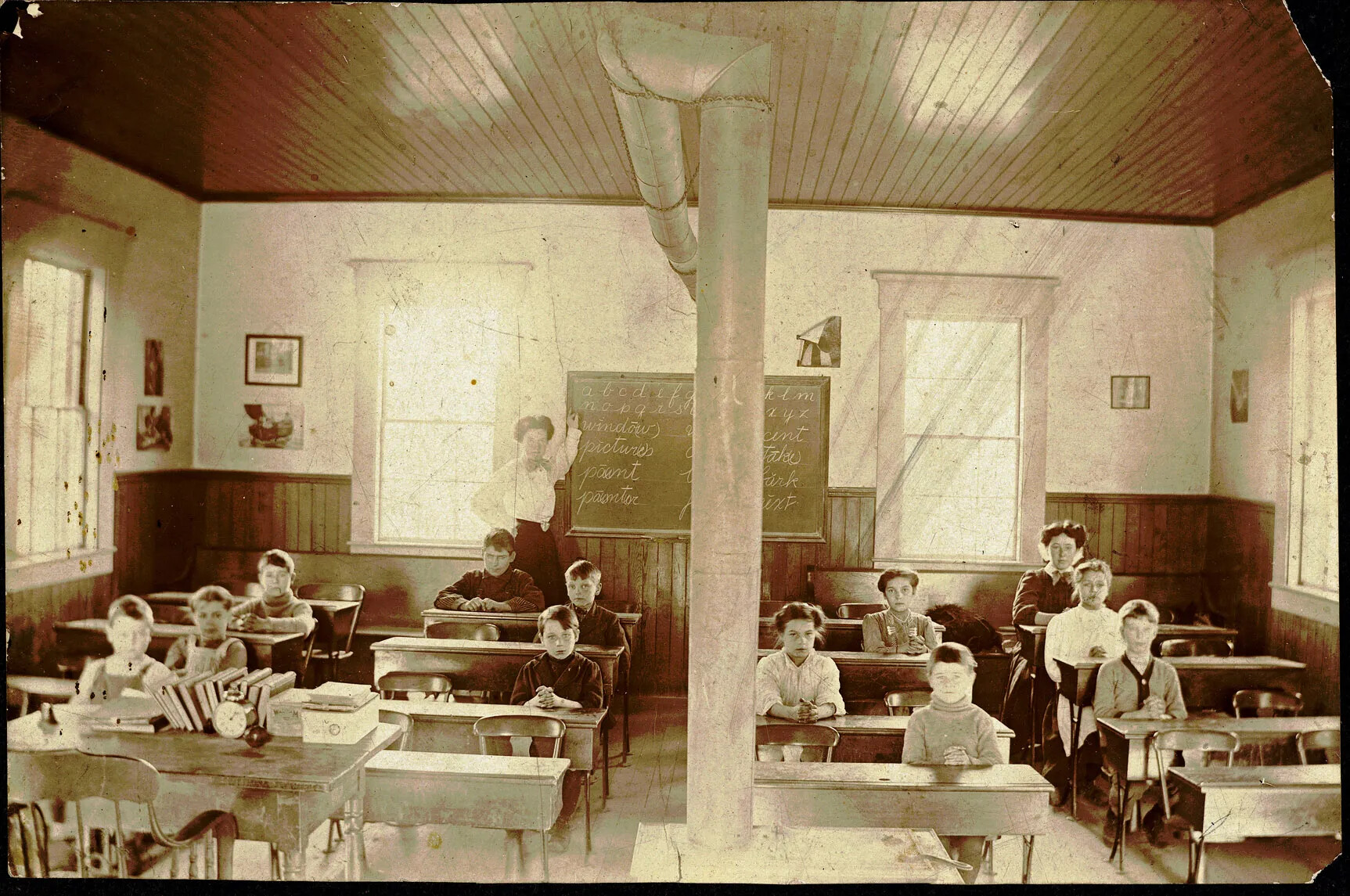
Caption:
This photograph shows a one-room schoolhouse in Candia, New Hampshire, during the 1800s.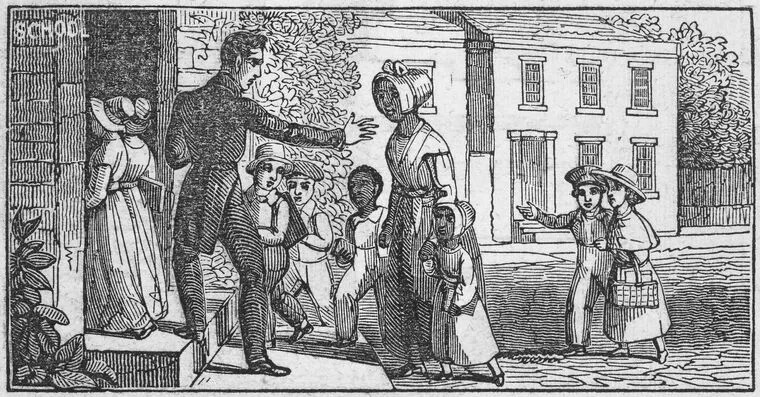
Caption:
Not all children received an equal education in the 19th century. For example, it was illegal to teach enslaved people to read and write, so enslaved children didn't get an education at all. Free Black children were usually not allowed to attend school with white children. In this illustration, a free Black woman is bringing her children to school, but the teacher is sending them away.Even though both boys and girls attended school, girls did not have the same rights as boys at this time. For example, girls would not be allowed to vote when they grew older, but boys would. Reformers believed it was still important for girls to be educated, though, because most of them would be mothers someday and they would help raise future citizens.
But not everyone had a chance to attend school. Black children and indigenous children were not allowed to attend school with white children. Neither Black people nor indigenous people could become citizens at this time, so their children were not allowed in the common schools. Sometimes there were separate schools for Black children or indigenous children. It was a long time before all children attended school together.
Since most people in New Hampshire lived on farms in the early 19th century, the school year was organized around the farming calendar. Students spent about 20 weeks per year in school, which is much less than students spend in school today.
The school year was divided into two parts. Half the school year was held in winter, and the other half was held in summer. During the spring and fall, most children had to work on their families’ farms. During the 19th century, the school year slowly got longer and longer until children were spending most of their time in school.
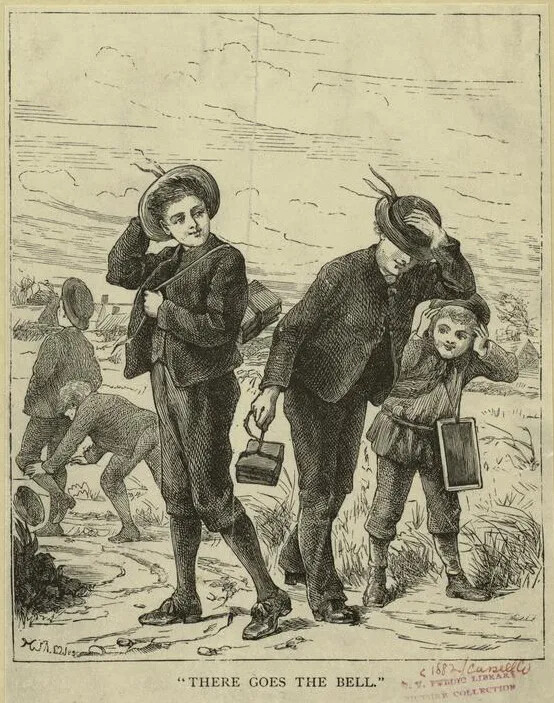
Caption:
In the 19th century, kids had to walk to school. There were no school buses or cars. Parents didn't have time to drive kids to school in their horse and wagon—and not everyone had a horse and wagon! One-room schoolhouses usually had a bell on the roof. The teacher rang the bell to signal the beginning and end of the school day.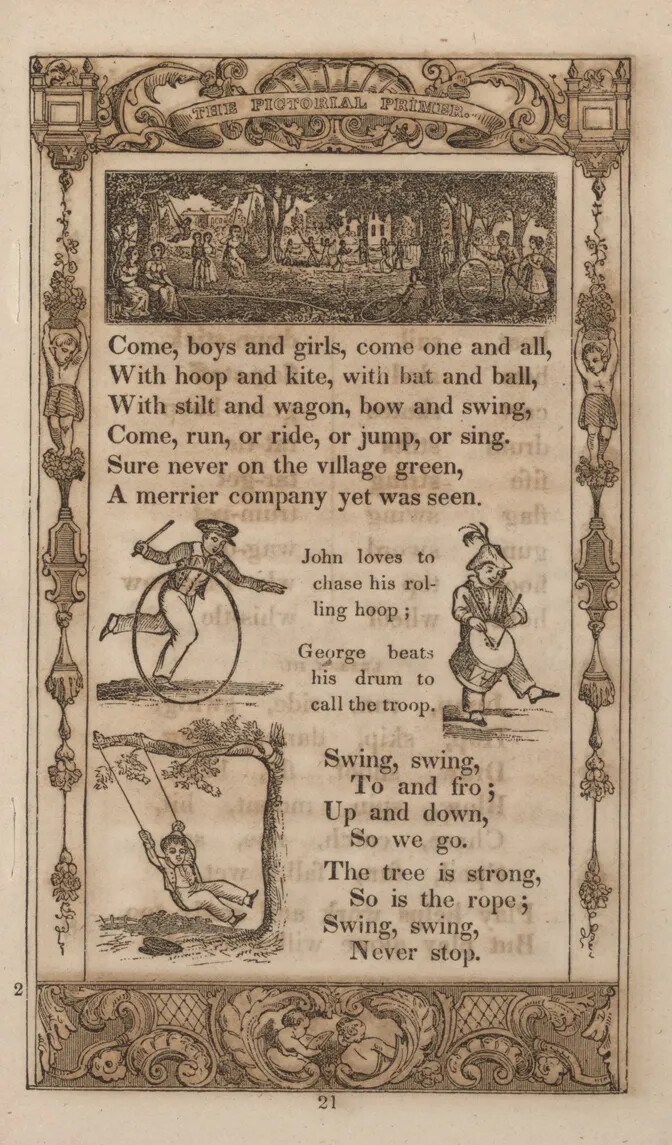
Caption:
A primer is a type of book used in the 18th, 19th, and 20th centuries that teaches the basics of reading, writing, and math. This page from a primer has short poems, rhymes, and drawings.What did children learn in school in the early 1800s?
Part of the movement to reform education included adding new subjects for children to learn. During the colonial period, children mainly learned how to read and write and how to add and subtract numbers. In the early 1800s, though, children began to learn a lot of new subjects, like history, civics, and literature. All of these subjects were focused on helping children learn what they needed to know when they were grown up.
A lot of the material students learned was about patriotism. They learned about America’s past as a British colony and how it won its independence from Great Britain. They learned about how the American government works and their responsibilities as citizens when they became adults. Their books were full of stories, songs, poems, speeches, and pictures about America’s heritage.
Books written just for children began to be published during the early 1800s too. Before then, books were printed only for adults. But by the 1810s, children could read stories written just for them, like fairy tales.
For younger children, people began to write nursery rhymes, like “Mary Had a Little Lamb,” which was written by a New Hampshire woman named Sarah Josepha Hale. She also published a magazine for children that had games, stories, and puzzles for them to solve. These kinds of publications helped children have fun while they learned basic skills.
Caption:
Sarah Josepha Hale was one of the most famous women in America in the 19th century. She was born in Newport, New Hampshire. She wrote novels and poems, including “Mary Had a Little Lamb,” which became a popular nursery rhyme. Later she was the editor of Godey’s Lady’s Book, an important magazine that was read by women all over the country. Because of this job, Sarah Josepha Hale had a lot of influence. She spoke out against slavery and in favor of more education for women. She also persuaded President Abraham Lincoln to make Thanksgiving a national holiday.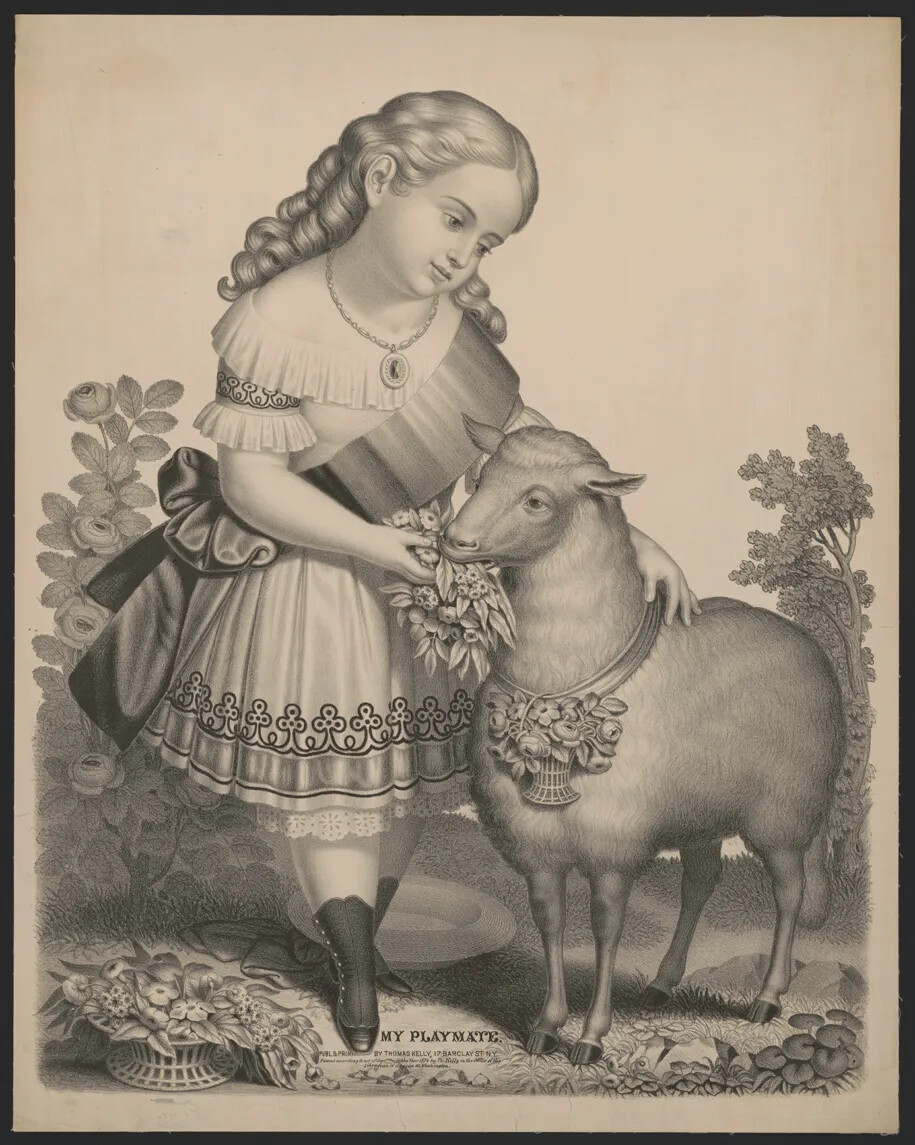
Caption:
The poem "Mary Had a Little Lamb" was written by a New Hampshire woman named Sarah Josepha Hale in 1830. Sarah taught children in her home, and one day a student's pet lamb followed her right into school! A few years later, someone set the poem to a melody and children began learning it as a nursery rhyme. Nursery rhymes help kids build their literacy skills.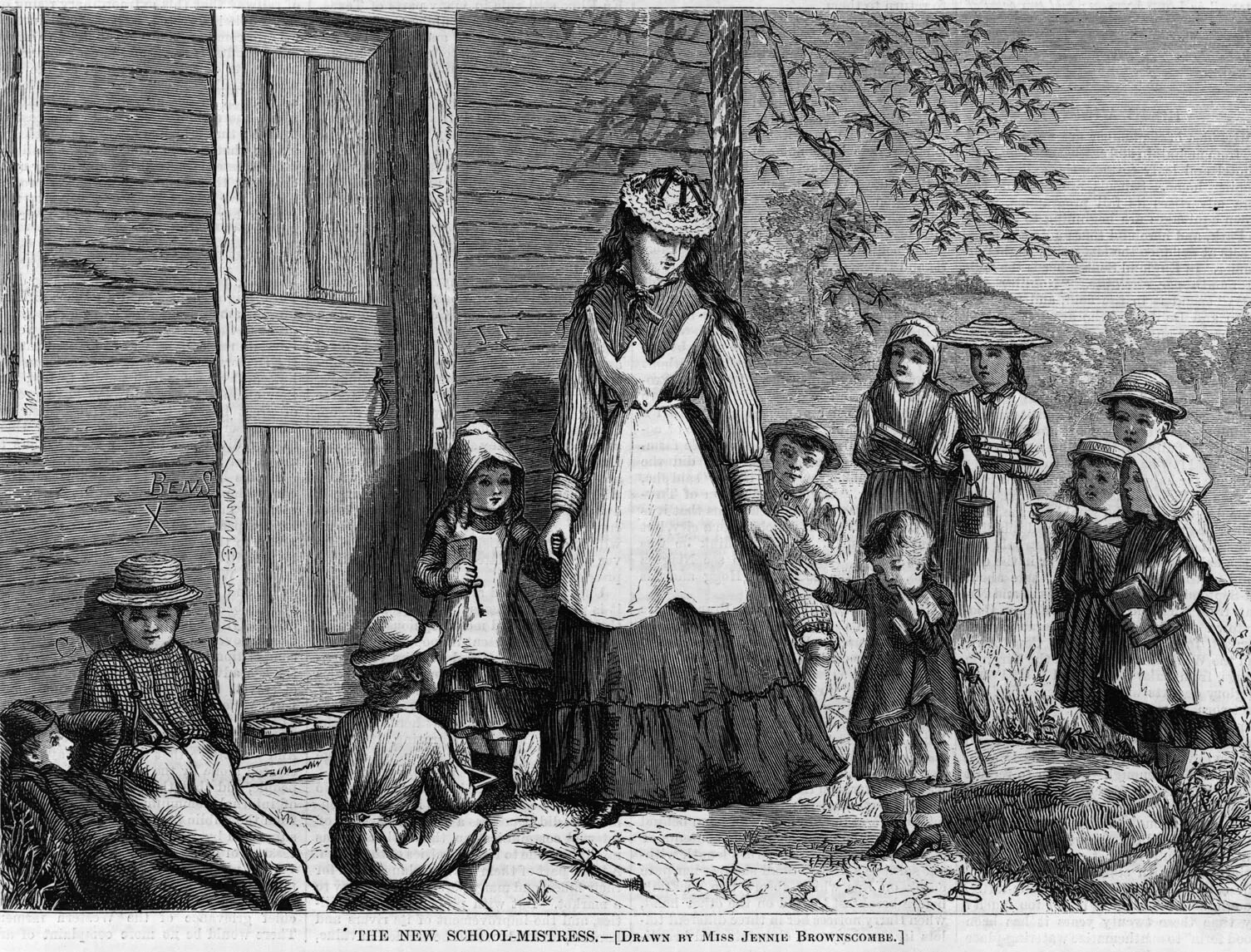
Caption:
Although most school teachers were men in the colonial period, that changed in the 19th century. More and more women, especially white women, became teachers. Teaching was seen as an acceptable job for women to have. Also, because women weren't paid fairly then, towns could pay female teachers less than male teachers. By 1900, at least 75% of teachers were women.Teachers were different in the early 1800s, too! Instead of the minister teaching children how to read and write, towns began to hire teachers whose entire job was to help children learn. Many of these teachers were young women. In fact, teaching was one of the first professions for women.
Let's Review!
What are the big ideas in this section?
Colonial Schooling
Education was important in colonial New Hampshire, but most children spent their time working on the family farm. They went to school mainly to learn how to read and write.
One-Room Schoolhouses
In the early 1800s, NH passed laws that required each town to build lots of schools, but each school was only one room. All the kids learned together in these schools, with older kids helping the younger kids.
New Subjects and New Books
In the 1800s, children began learning more subjects, like history, civics, and literature. Books were also published just for kids. Most of them had stories, poems, and pictures that celebrated America.
Women Teachers
Many women became teachers in the one-room schoolhouses. Teaching was one of the few jobs women could have in the 19th century.
Ending Slavery
What is slavery, and did it exist in New Hampshire?
The other big reform movement in New Hampshire in the early 19th century was about slavery.
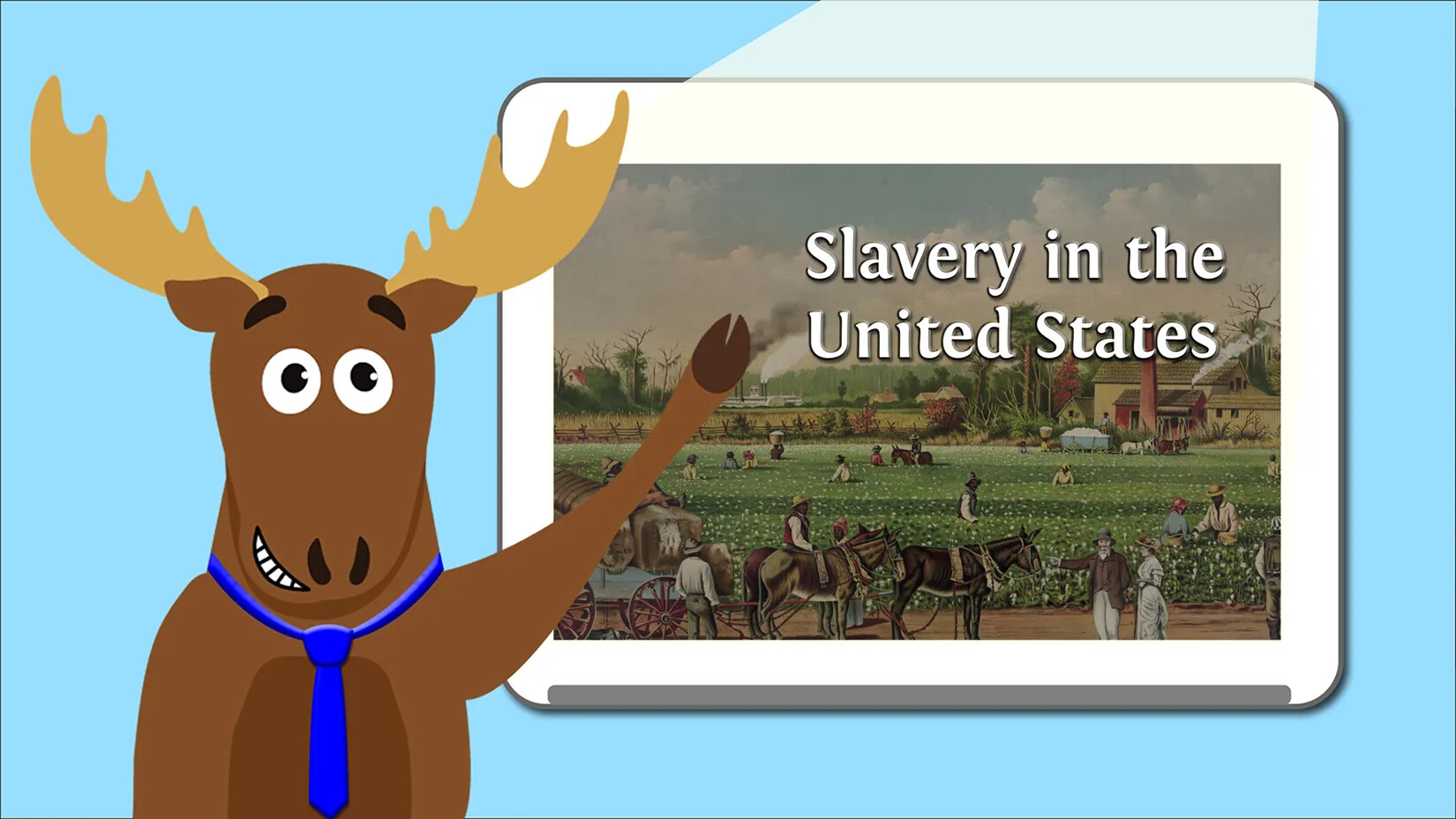
Mason Explains: Slavery in the United States
The Lives of Enslaved People
During the colonial period, there were almost 700 enslaved Black people living in New Hampshire. After the American Revolution, many slaveholders set their enslaved people free, both in New Hampshire and in other northern states. By 1800, there were just 8 enslaved people living in the state.
Slavery was not made illegal in New Hampshire until 1857, but there were no more enslaved people here by then. In the early 19th century, Black people lived in many towns in New Hampshire, especially in the seacoast region.
There were still millions of enslaved Black people living in the United States, though. Almost all of them were in the southern states, working on farms or plantations.
The textile mills in New Hampshire depended on enslaved people in the South to grow the cotton they needed to make cloth. Thousands of bushels of cotton were shipped to New Hampshire—and the other New England textile factories—every year.
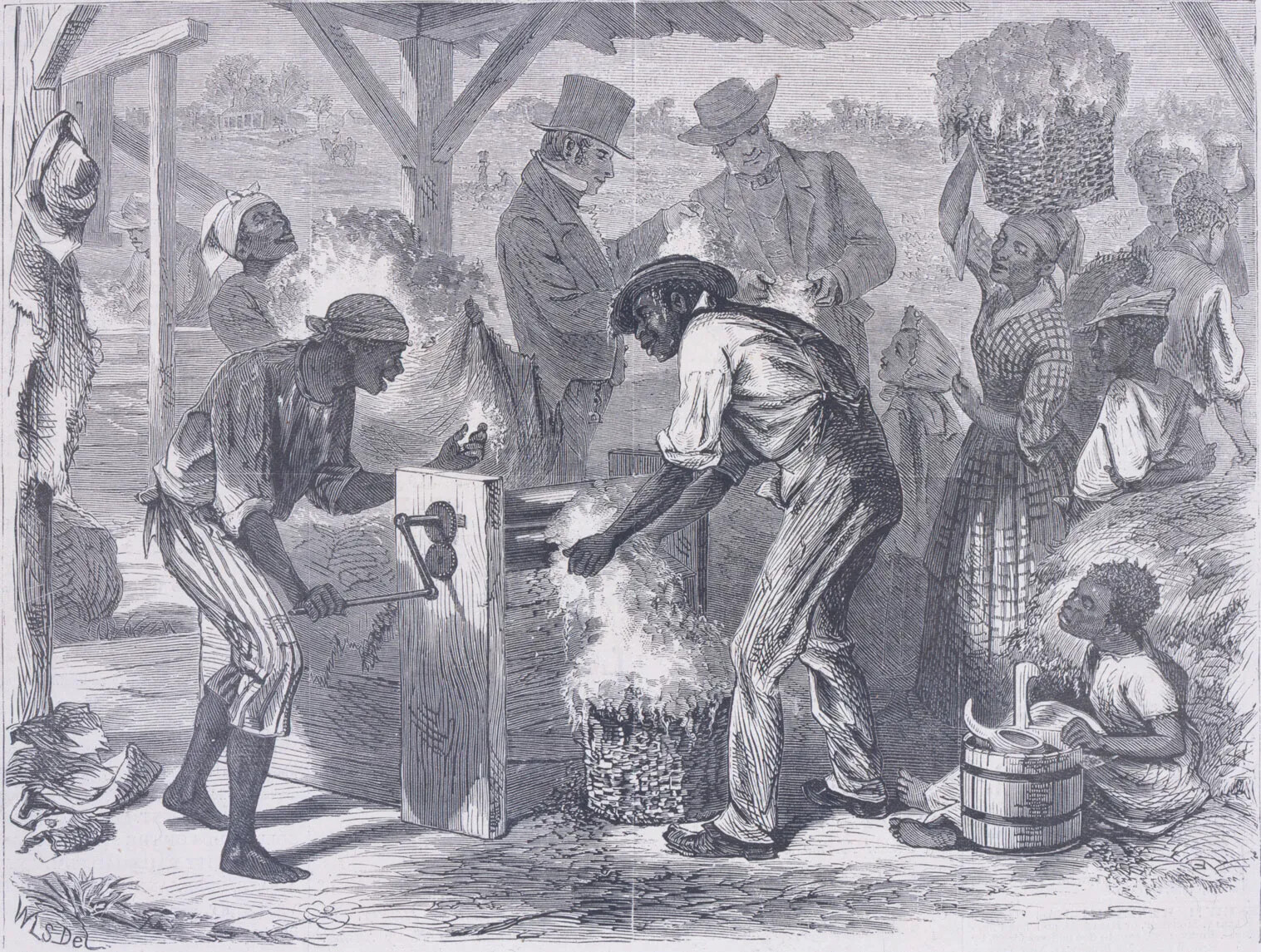
Caption:
In 1793, a machine called a cotton engine, or "gin," was invented. The machine removed the seeds from cotton plants. The cotton gin meant that farmers and plantation owners in the American South could grow a lot more cotton. The work of planting and harvesting the cotton was usually done by enslaved people. A lot of this cotton was shipped to textile factories in New Hampshire and other New England states to be made into cloth.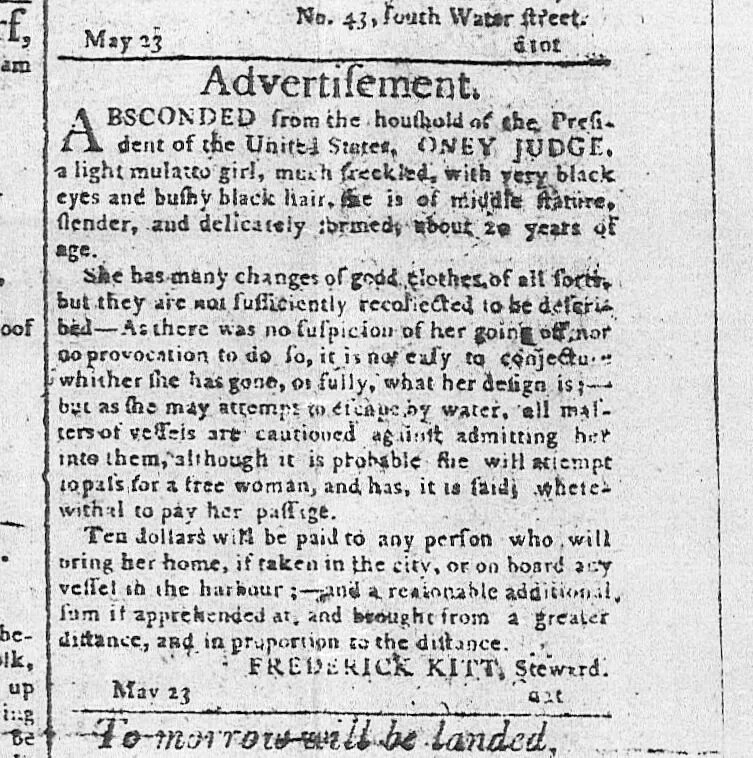
Caption:
In 1796, a young enslaved woman named Ona Judge arrived in Portsmouth on board a ship. She had been enslaved to George Washington, who was the president of the United States. She ran away from the Washingtons to seek freedom. George Washington wanted her back and tried to get his friends in New Hampshire to send her back to slavery. Washington's assistant published this notice in a newspaper so people would look for her, but she was never caught. Ona Judge lived the rest of her life in New Hampshire.Slavery had never been very popular in New Hampshire, though. Most people in the state thought it was wrong to enslave other people.
In 1796, an enslaved woman named Ona Judge arrived in Portsmouth on a ship that had come from Philadelphia. She had been enslaved to George Washington, who was the president of the United States. George Washington wanted her back and tried to get his friends in New Hampshire to send her back to slavery. Washington’s friends refused, and Ona Judge lived the rest of her life in New Hampshire.
Caption:
Ona Judge was born into slavery at Mount Vernon, George Washington’s estate in Virginia. When George Washington was elected president of the United States, Judge and seven other enslaved people traveled to Philadelphia, the first capital of the country, to work for the Washington family there. Judge was determined to seek her freedom. On a May evening in 1796 she left the president’s home in Philadelphia and made her way on board a ship that sailed for Portsmouth, NH. Judge lived in Portsmouth for a while, but someone recognized her and contacted the Washingtons. She moved to Greenland, NH, where it was a little safer for her. The Washingtons kept trying to get her back, but she was never recaptured. Judge married a free black man, John Staines, and had three children. She lived the rest of her life in New Hampshire, though she never became legally free. There are no portraits of Ona Judge, or of most enslaved people of that time.How did Granite Staters work to end slavery throughout the United States?
Although most people in New Hampshire did not like slavery, only some of them worked to end it. Most people hoped it would disappear from the South eventually, just like it did in New Hampshire and the rest of the North. They believed slavery would gradually come to end. But a small group of people thought slavery was so terrible that it had to end right away.
They were called abolitionists because they believed slavery should be abolished, or ended, immediately. Abolitionism was also called antislavery because the movement was against slavery. There were never many abolitionists in New Hampshire, but they were very active and drew a lot of attention to their cause, especially in the 1830s and 1840s.
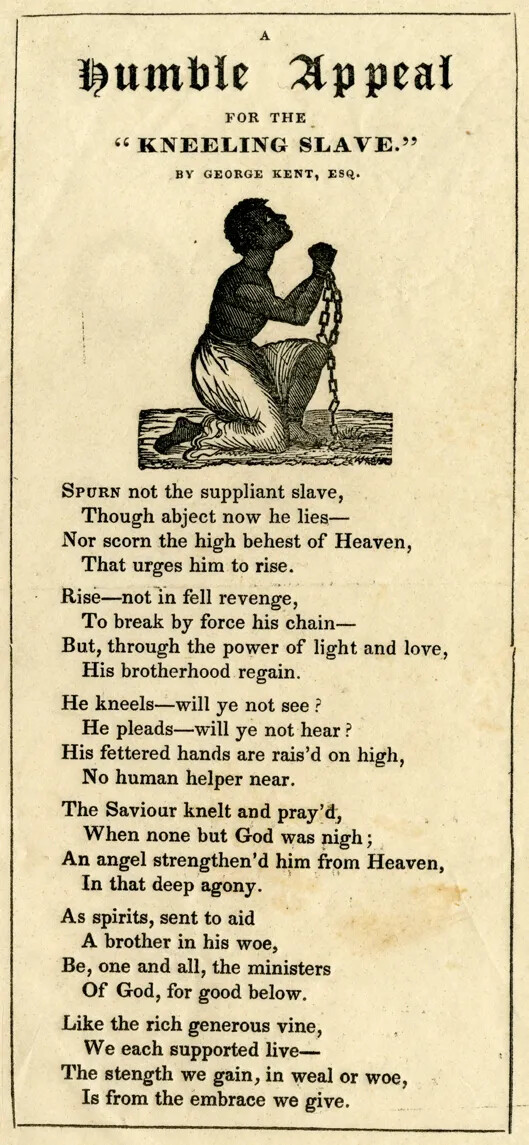
Caption:
This poem was written by an abolitionist named George Kent who lived in Concord, New Hampshire. He was the treasurer of the New Hampshire Anti-Slavery Society. This poem and the illustration were reprinted in newspapers all over the country.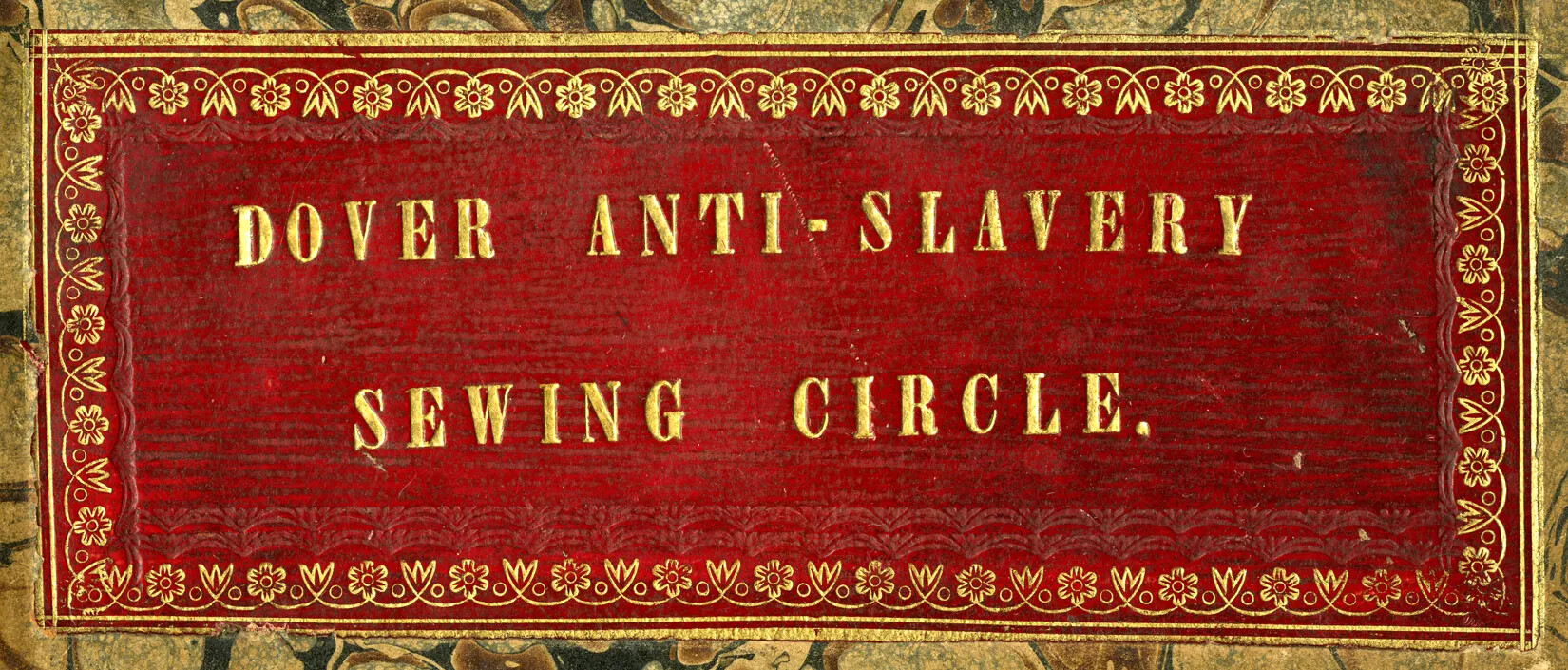
Caption:
During the period before the Civil War, it was controversial for women to participate in politics. Women did not have the right to vote, and many people believed it was not appropriate for women to be active in political causes. Women who were opposed to slavery had to fight against these ideas. Sometimes they used typical "women's" activities to work for their cause. For example, the Dover Anti-Slavery Sewing Circle formed in 1840. Women got together to raise money and sew clothing and other items that they sent to a community of escaped slaves in Canada. This image is from the cover of their record book.In 1833, New Hampshire’s first abolitionist society was formed in Plymouth. Other towns formed their own abolitionist societies soon after until there were more than 60 antislavery groups across the state. Some of these groups were just for men. Others were just for women. And in some groups men and women worked together.
Abolitionists believed that the best way to end slavery was to convince other people that slavery was wrong. When enough people agreed with them, the laws about slavery would be changed, and it would be made illegal throughout the country. This idea of trying to change people’s minds was called moral suasion.
Speakers. Abolitionists organized many different activities to get people’s attention and teach them about slavery. For example, they often arranged for speakers to travel around New Hampshire and give public lectures about slavery. Sometimes these speakers were from New Hampshire, but sometimes they were famous people from elsewhere in the United States or even Great Britain.
One of the most well-known abolitionist speakers was Frederick Douglass, who came to New Hampshire several times. Frederick Douglass escaped from slavery when he was a young man by hiding on board a ship. He wrote an autobiography about his experiences as an enslaved person. In fact, he wrote part of the book while he was staying with a friend in Weare. He was also a very good speaker, and hundreds of people came to hear him talk about slavery.
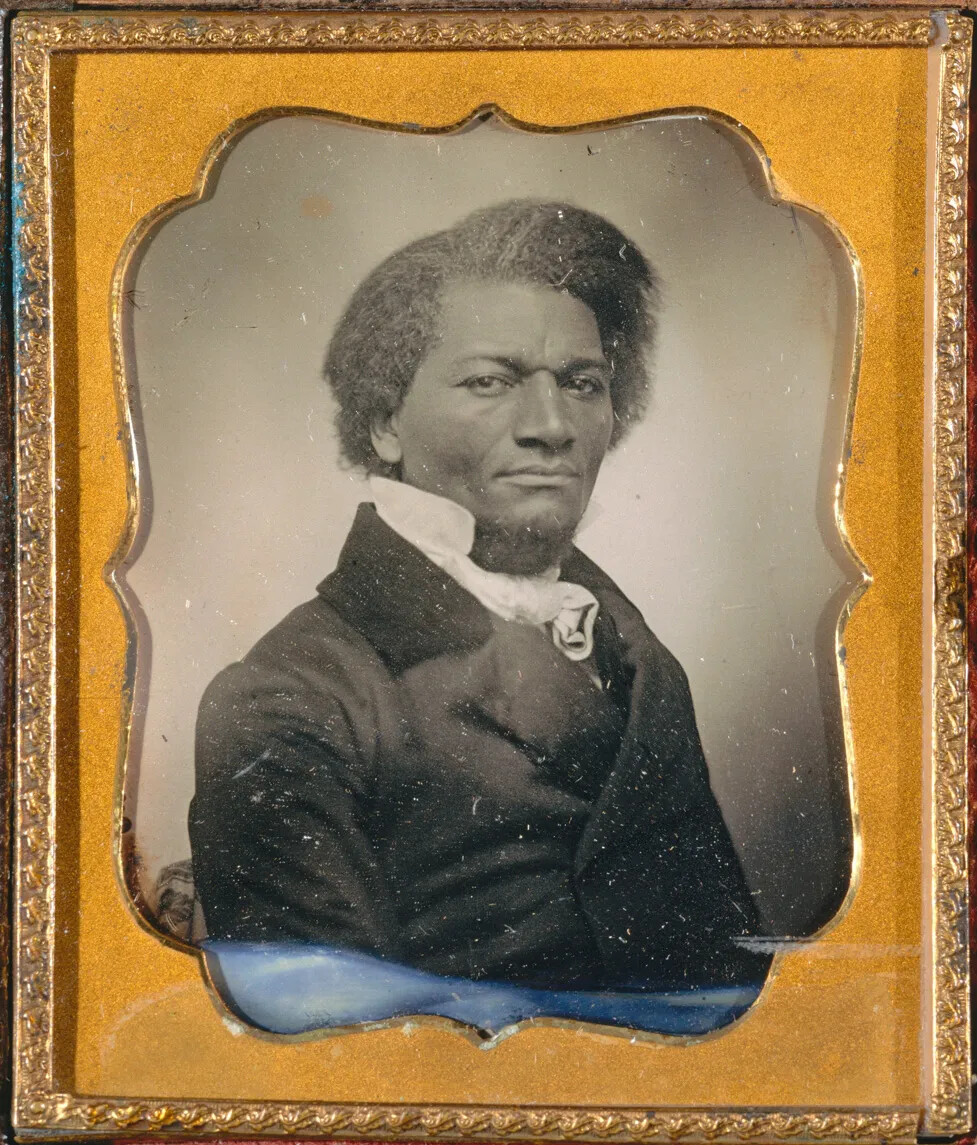
Caption:
Frederick Douglass was an abolitionist, civil rights activist, writer, and speaker. He was born into slavery around 1818. It was illegal to teach enslaved people to read and write, but he secretly taught himself. As a young man he escaped from slavery and moved to Massachusetts. He began to speak out against slavery and became very famous. He wrote an autobiography about his life and founded an abolitionist newspaper. He also spoke out about women's rights, such as the right to vote, and for the rights of Black soldiers who fought in the Civil War. Frederick Douglass died in 1895.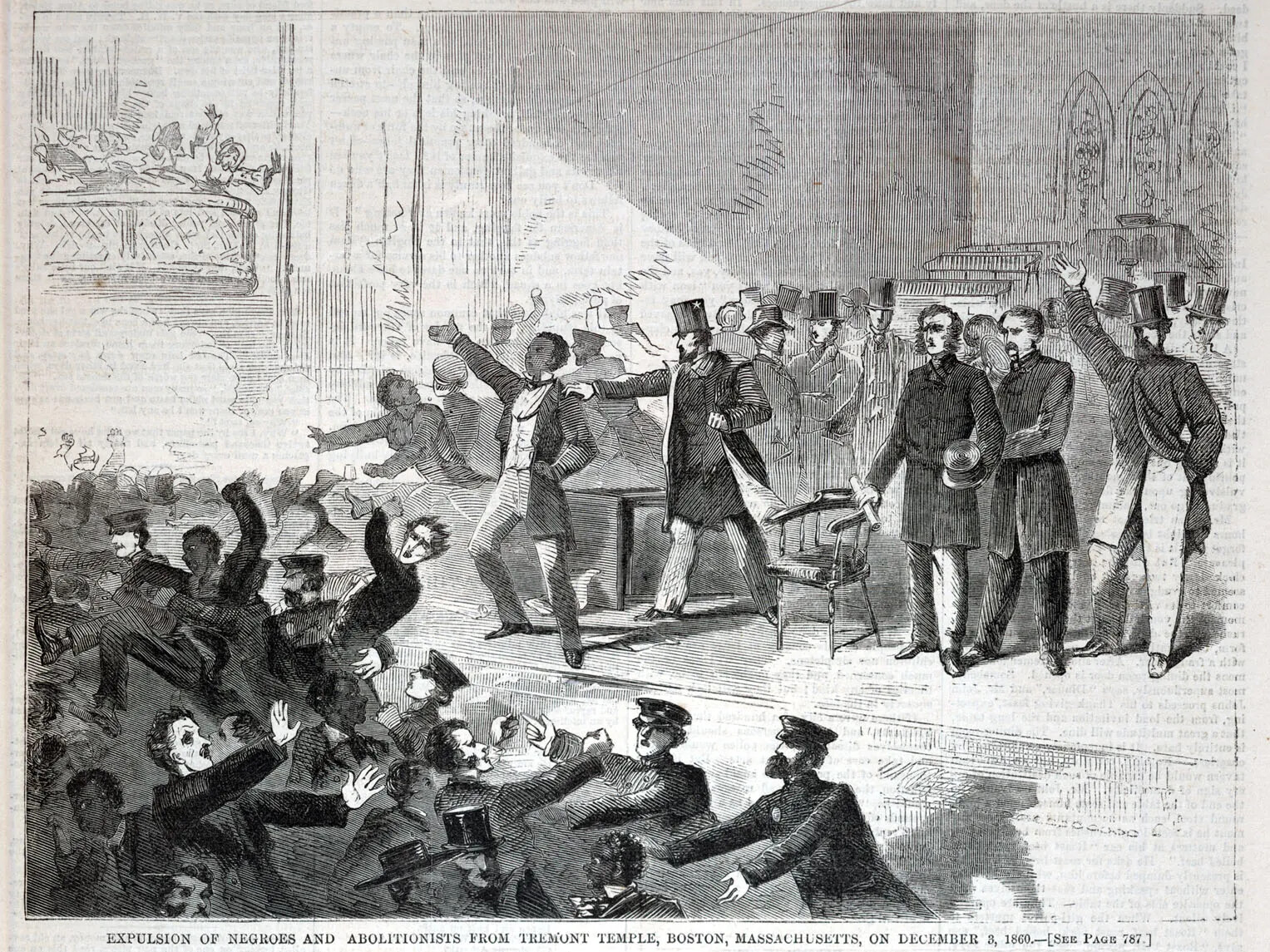
Caption:
Abolitionists, or people who wanted slavery to end, were not always popular. Many people in the North and the South either supported slavery or thought that abolitionists should mind their own business. Sometimes angry mobs attacked abolitionist speakers and supporters. This drawing shows an event when people rushed into a meeting hall in Boston where abolitionists were gathered and started a riot. Note: In the 18th and 19th centuries, the word “Negro” was used to refer to people who had darker skin, who are now called Black, and was not offensive at that time. The word “Negro” should not be used today except when referring to historical documents.Not everyone welcomed abolitionist speakers, though, no matter how famous they were. Sometimes angry mobs drove abolitionist speakers out of town.
These attacks did not always work out as the mobs planned because newspapers published articles about what the mobs had done. A lot of people in New Hampshire thought that abolitionists should be free to talk about their beliefs, even if no one agreed with them. The mobs sometimes made the public more sympathetic to abolitionists.
The Petition Campaign
Abolitionists also gathered thousands of signatures on petitions asking the U.S. government to end slavery throughout the country. Men and women knocked on the doors of people’s homes, asking them to sign a petition. Many people did. In some towns, as much as 30 percent of the population signed a petition against slavery.
Then the abolitionists tried to give the petitions to one of their representatives in the U.S. House of Representatives. One of New Hampshire’s congressmen at that time was a political leader named Franklin Pierce. He was the leader of the Democratic Party in the state, and one day he would be elected president of the United States.
When the abolitionists asked Franklin Pierce to present their petitions to the U.S. Congress, Pierce refused. He thought abolitionists were causing too much trouble between northerners and southerners. The New Hampshire abolitionists had to take their petitions to a congressman from Massachusetts instead. Other antislavery petitions from abolitionists in other states were presented at the same time. But the U.S. Congress refused to hear any of the antislavery petitions.
Caption:
Franklin Pierce was the 19th president of the United States and the only president from New Hampshire. He was born and raised in Hillsborough, New Hampshire, and later moved to Concord. He was a lawyer and a politician. Before he was elected president, he represented New Hampshire in the U.S. Congress. He also served in the U.S. Army in the Mexican-American War. He was president for one term, from 1853 to 1857. This was a very difficult time for the United States. There was a lot of tension between the North and the South over slavery. President Pierce thought it was more important to keep the country together than to abolish slavery. He tried to find a compromise between the two sides, but it did not work and made the problems worse.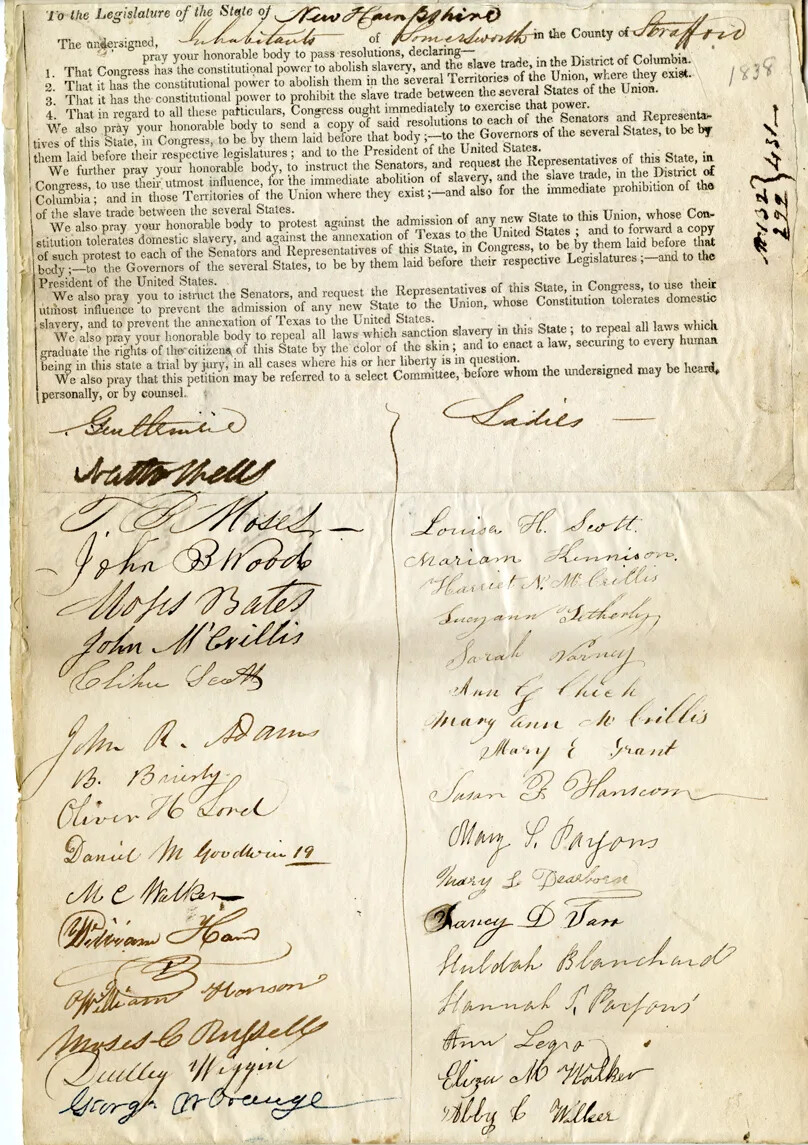
Caption:
This petition was sent by a group of people from Somersworth to the New Hampshire state legislature. It asked the state legislature to pass resolutions asking the U.S. Congress to abolish the slave trade and prevent slavery from expanding into any new territories of the United States. Petitions like this one were a common strategy used by anti-slavery activists, especially women. Circulating petitions helped them influence public opinion. This petition was signed by 132 men and 299 women, and is almost nine feet long.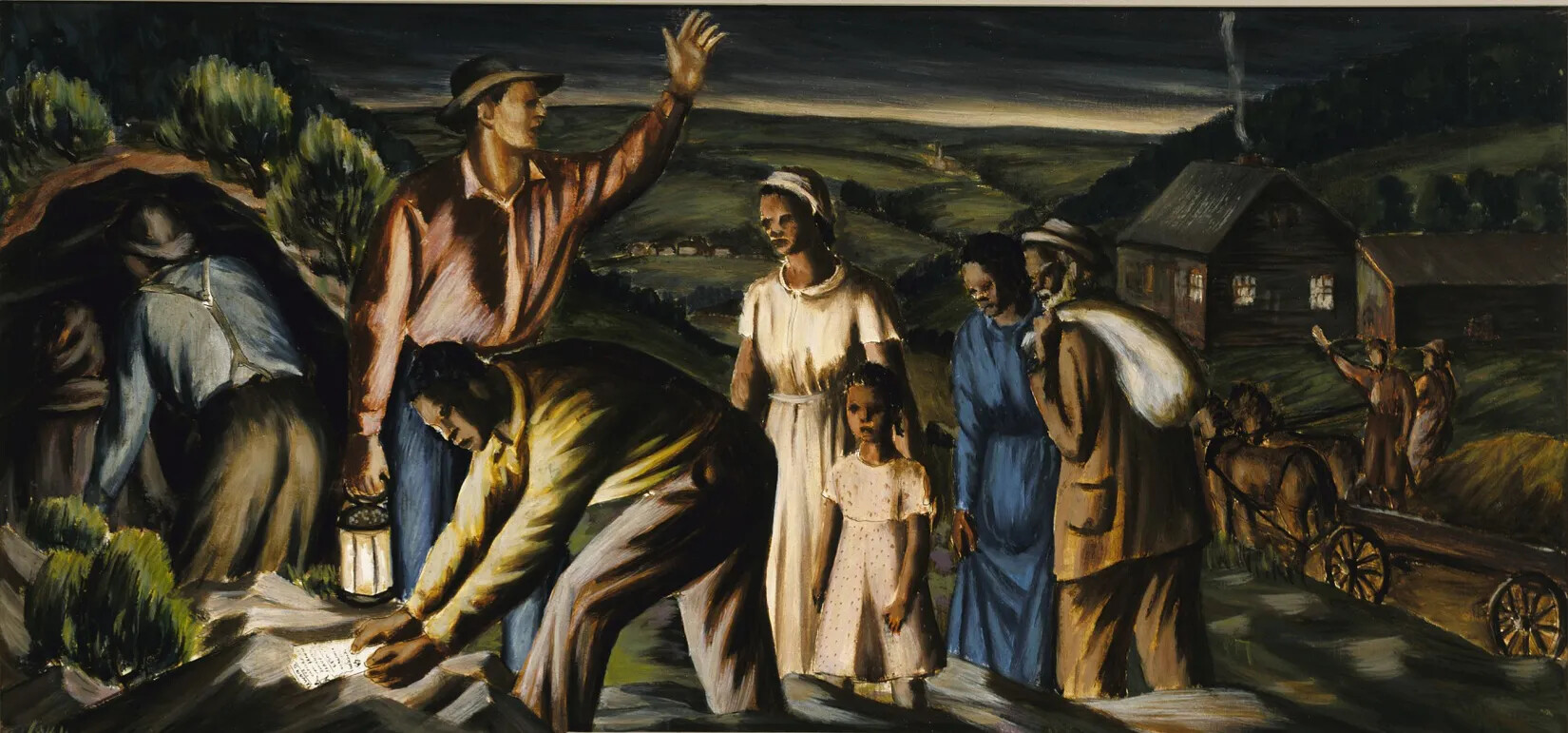
Caption:
The Underground Railroad was not really a railroad. It was a loose network of routes and trails that enslaved people used to escape to freedom in the northern United States or Canada. They had help from free Black and white abolitionists along the way. It was dangerous to help escaped slaves, and even more dangerous to try to escape. No one knows for sure how many people made it to freedom through the Underground Railroad, but it may have been as many as 50,000. This image is from a mural in a post office in Dolgeville, New York. It was painted around 1940.The Underground Railroad
Some abolitionists were so opposed to slavery that they helped enslaved people escape from the South. Escaping from slavery was very dangerous for enslaved people. If they were caught they were sent back to slaveholders in the South and were often punished with violence.
Before 1861, it was against the law to run away from slavery, and it was also against the law to help other people run away from slavery. But some abolitionists in the North helped enslaved people anyway. They set up a network of safe houses where enslaved people could stay as they escaped north. The safe houses provided enslaved people with food, clothing, medical attention, and a place to sleep and rest on their journey.
This network was called the Underground Railroad, even though it was not a railroad at all. It was really more of a trail that enslaved people could follow to freedom.
Many routes on the Underground Railroad passed through New Hampshire. No one knows for sure where all the safe houses were because the routes were secret. The routes also changed a lot so the safe houses would not be discovered.
The Herald of Freedom
Abolitionists in New Hampshire also published a newspaper to promote their activities, like speeches or fundraising drives. It was called the Herald of Freedom, and it was published in Concord by Nathaniel Peabody Rogers. Before becoming an abolitionist, Rogers had been a lawyer who was used to arguing in court. He used those same skills to write editorials that used moral suasion to convince people slavery must end.
Although abolitionist newspapers were published in many northern states, the Herald of Freedom was one of the more popular antislavery newspapers. It was read throughout New England and New York.
Caption:
Nathaniel Peabody Rogers was an important abolitionist from New Hampshire. That means that he worked to end slavery. He was from Plymouth, New Hampshire, and later lived in Concord. Nathaniel Rogers was a lawyer. As a young man he came to believe that slavery was wrong and should be abolished. He founded the first antislavery society in the state. Later he became the editor of an abolitionist newspaper, the Herald of Freedom. He wrote essays in the newspaper to try and convince people that slavery should end.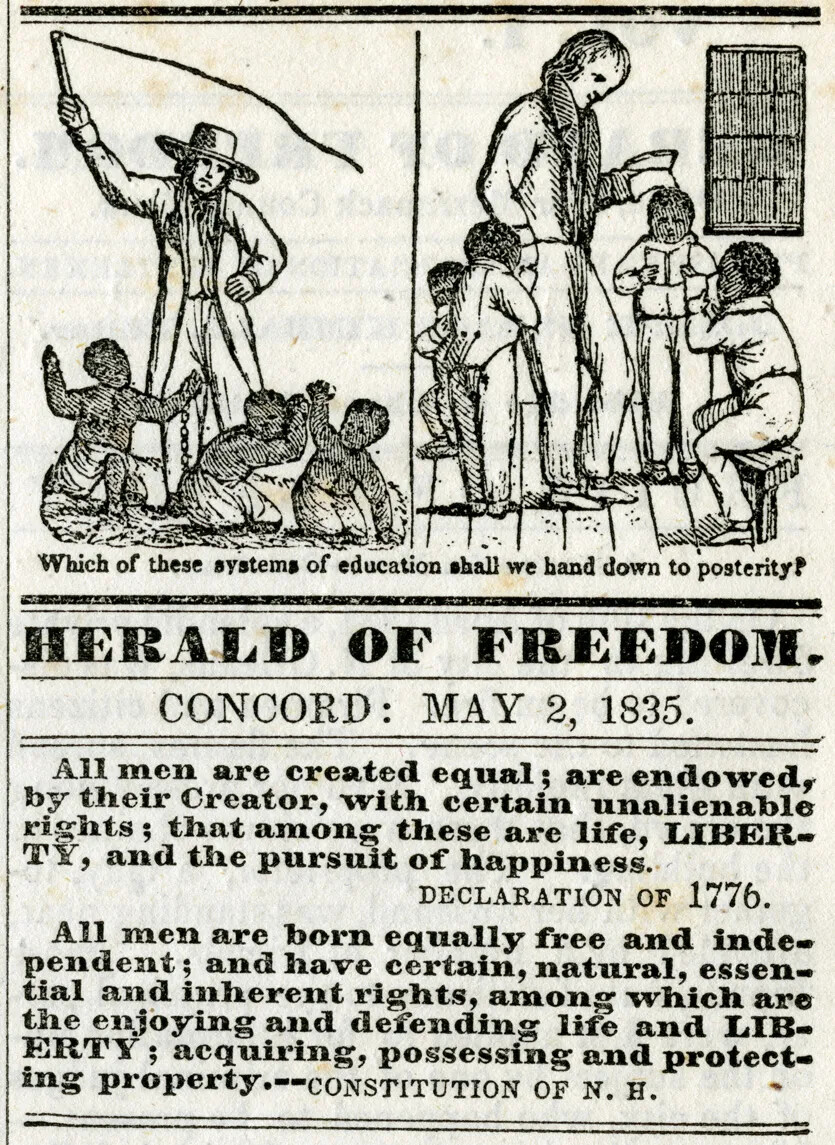
Caption:
This is the masthead for the Herald of Freedom. A masthead is the title of the newspaper or magazine at the top of the editorial page. That is the section where the editors share their opinions on important topics. It may also include letters from readers. In this case, it also included two illustrations. The Herald of Freedom was an abolitionist newspaper printed in Concord, New Hampshire. That means that the newspaper supported ending slavery in the United States and tried to persuade others to agree.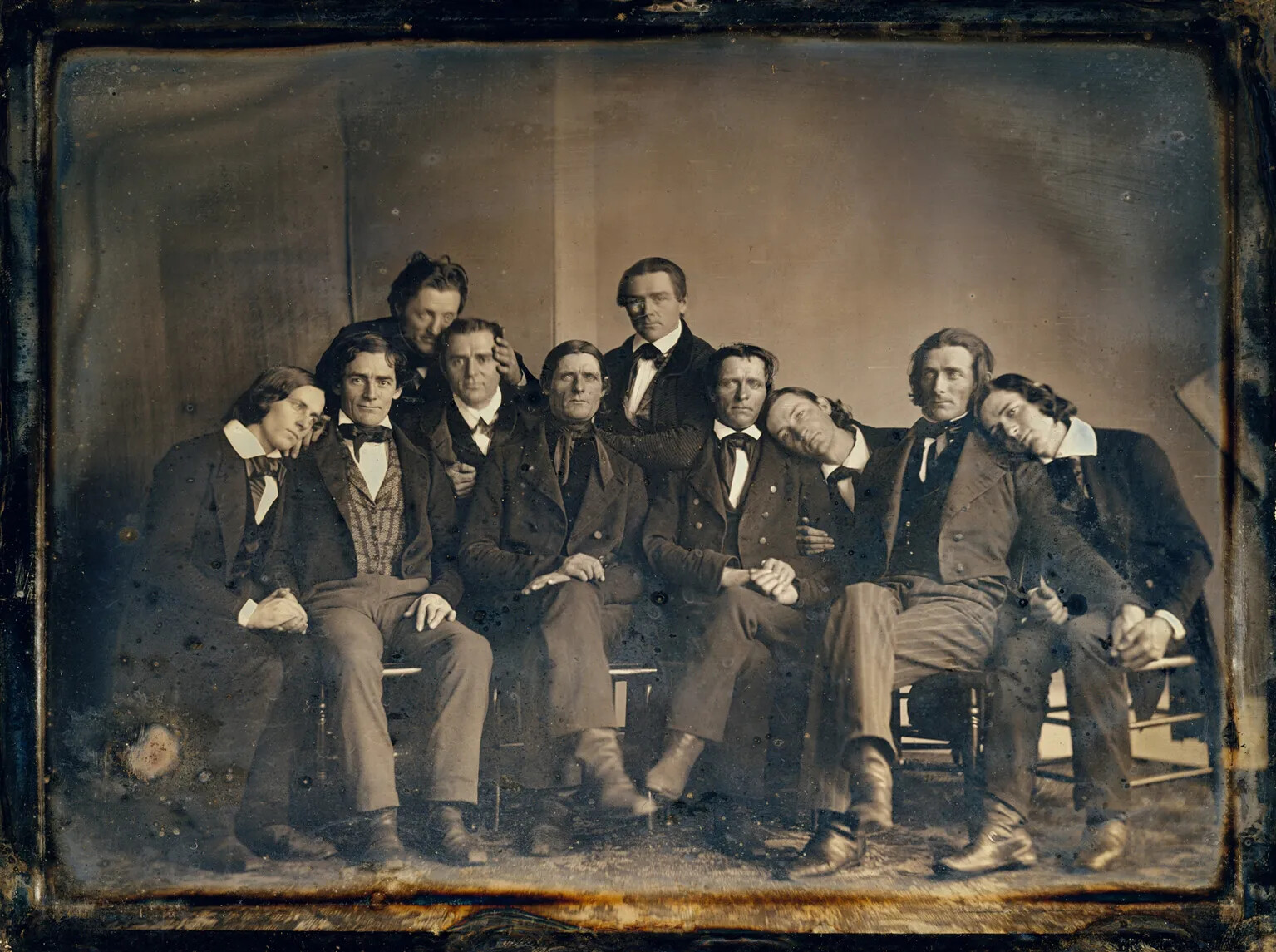
Caption:
The Hutchinson Family Singers were one of the most popular singing groups in America in the 19th century. They were a group of brothers and sisters from Milford, New Hampshire. They traveled all over the country performing. The siblings didn't all perform together at once; usually just four at a time. They wrote many songs themselves, and their songs encouraged people to make good moral choices. While traveling, they met Frederick Douglass, who convinced them to write and sing songs about abolishing slavery.The Hutchinson Family Singers
New Hampshire was also the home of the Hutchinson Family Singers, the most popular singing group in the United States in the 1840s and 1850s.
The Hutchinson family was from Milford. There were 16 children in the family, but the original singing group included just four of them. Over the years, some siblings left the singing group and were replaced by others. Eventually, 13 of the brothers and sisters performed as part of the Hutchinson Family Singers, but not all at one time.
They began performing and traveling around New Hampshire in the 1830s, singing mostly patriotic songs that they wrote themselves. While on their travels, they met Frederick Douglass, who convinced them to start singing songs that protested slavery and called for enslaved people to be emancipated.
Caption:
The Hutchinson Family Singers were the most popular American singing group in the 1840s and 1850s. They were a group of siblings from Milford, New Hampshire, who traveled around the country singing together. There were 16 brothers and sisters in the family, but they did not all sing together at the same time. The Hutchinsons wrote a lot of their own songs, including “The Old Granite State,” which was about New Hampshire. They also sang songs about religion, the rights of factory workers, and women’s rights. They became especially known for songs that protested slavery and called for enslaved people to be set free.In the mid-1840s, the Hutchinson Family Singers went on a tour throughout the North. Audiences loved their music. They eventually got involved in several reform movements, but they were most committed to abolition.
They were also very proud of being from New Hampshire. They ended every show with a song about New Hampshire called “The Granite State.”
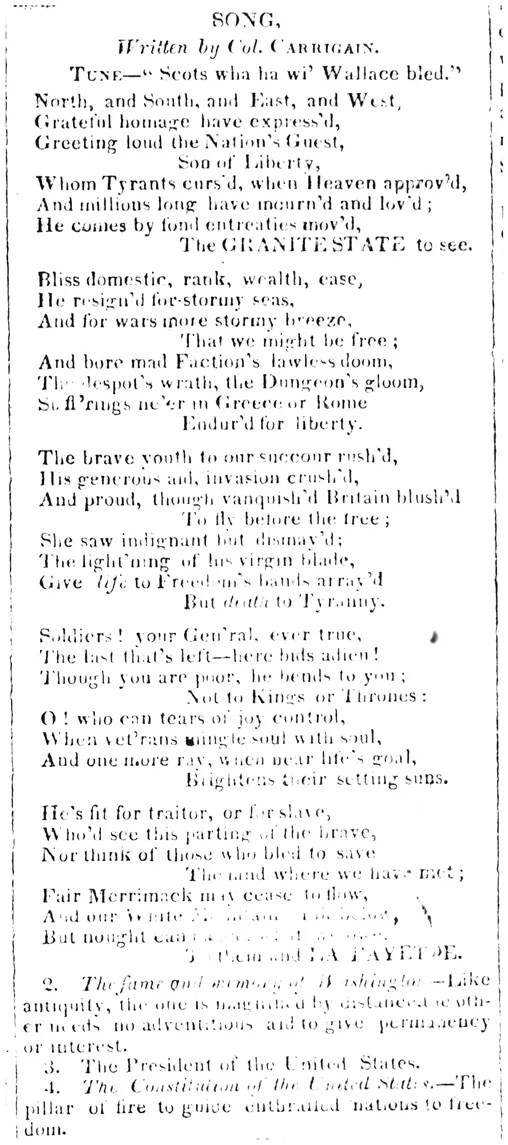
Caption:
This song is the first time we know of that people called New Hampshire "the Granite State." It was written by a man named Philip Carrigain. He wrote it in 1825, when an important French general named Marquis de Lafayette visited New Hampshire. Lafayette had fought with George Washington in the American Revolution and helped America win its independence from England. Fifty years later, he visited the United States. Wherever he went, people had big celebrations for him. When he visited Concord, there was a fancy dinner on the State House lawn, with speeches and songs. This song, "the Granite State," was performed then. It was printed in the Concord Register on June 25, 1825.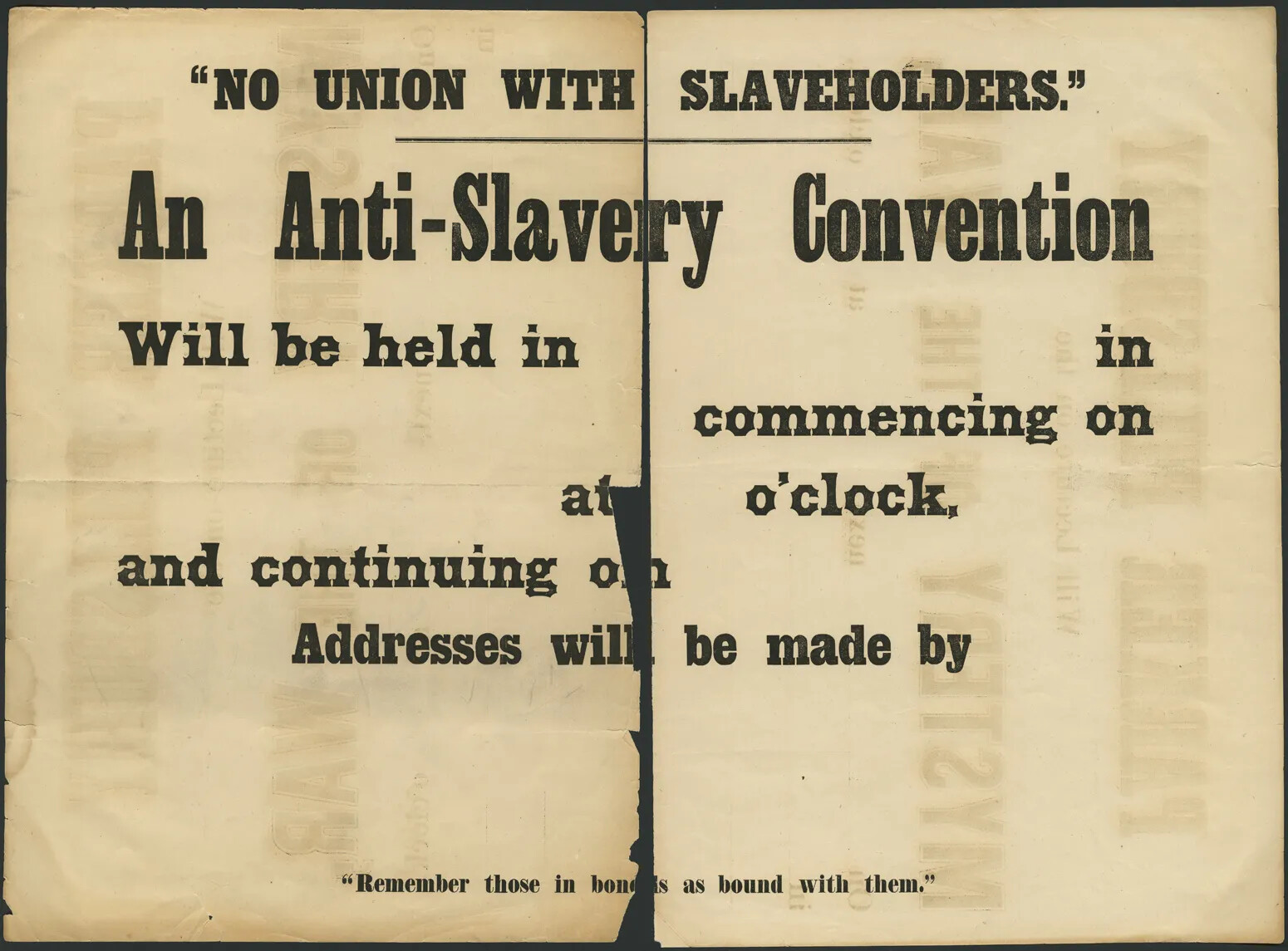
Caption:
This poster advertised an anti-slavery convention somewhere in New Hampshire. Anti-slavery conventions were common throughout the northern United States during the 1840s and 1850s. Anti-slavery activists could get together and share ideas and strategies, and listen to speeches by leaders of the movement. The quote on this poster, "no union with slaveholders," is by William Lloyd Garrison. Garrison was considered a radical abolitionist because he argued that all enslaved people should be freed immediately. Many anti-slavery activists thought that emancipation should be more gradual.New Hampshire had a reputation for being an abolitionist state, even though many people here did not support the abolitionists. Eventually, though, more and more people in New Hampshire started to agree with the abolitionists that slavery was bad for the country and had to end.
Let's Review!
What are the big ideas in this section?
Slavery in the United States
Slavery disappeared in northern states in the early 1800s but expanded in the southern states. Northern factories depended on the cotton grown by enslaved people in the South, though.
The Effort to End Slavery
Throughout the North, reformers tried to convince people that slavery needed to end right away. They held speeches, published newspapers and books, and organized petition campaigns to Congress.
Mobs Attack Abolitionists
Many people, even in the North, did not like abolitionism, though. They thought abolitionists were troublemakers and southerners had a right to own enslaved people. But other northerners thought the abolitionists had a right to argue for what they believed in.
NH's Contribution
NH abolitionists were very active in the cause. They helped enslaved people escape from the South and tried to change people's minds about slavery with newspapers like the Herald of Freedom and the singing group known as the Hutchinson Family Singers.
Unit 9 Student Reading
A printable version of the student reading for this unit, without pictures or graphics.













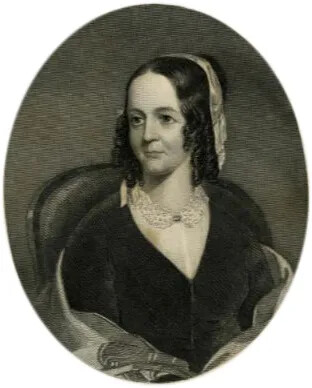


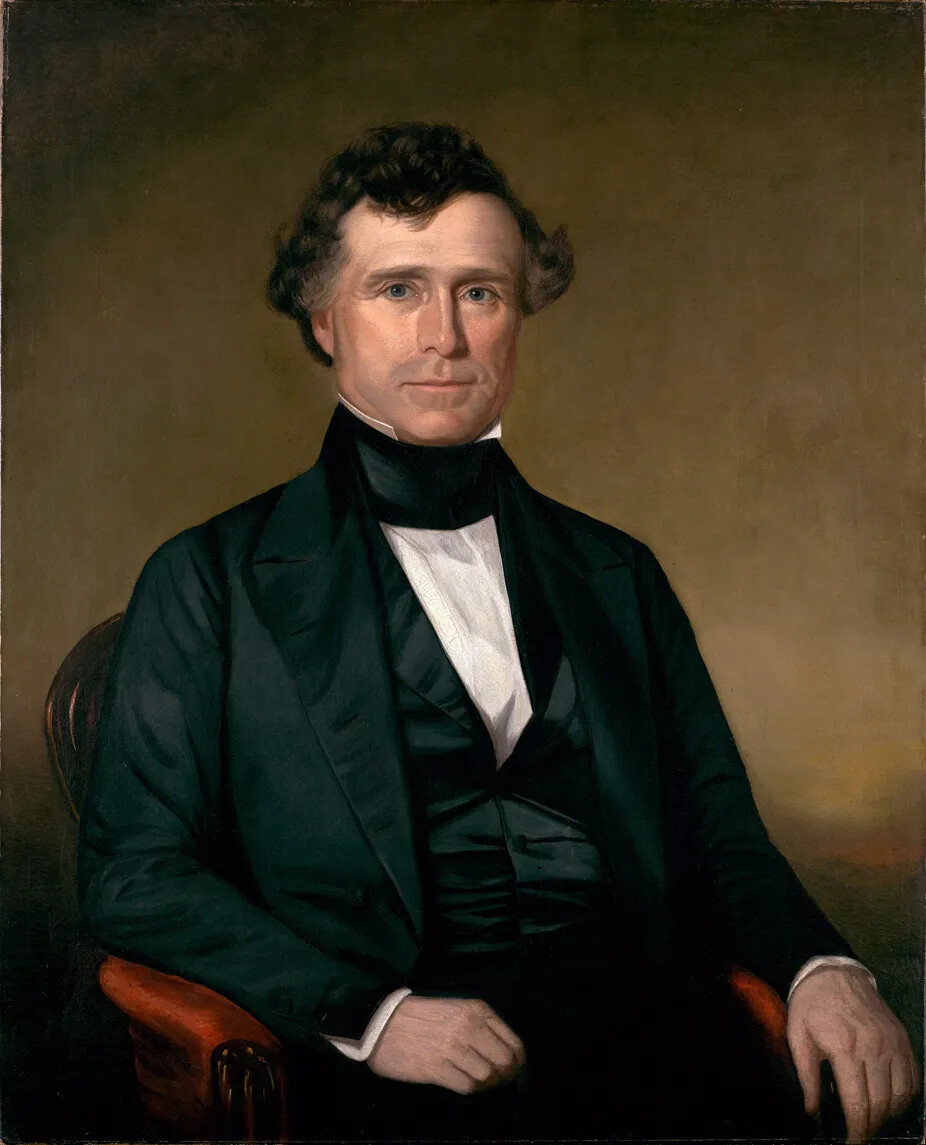
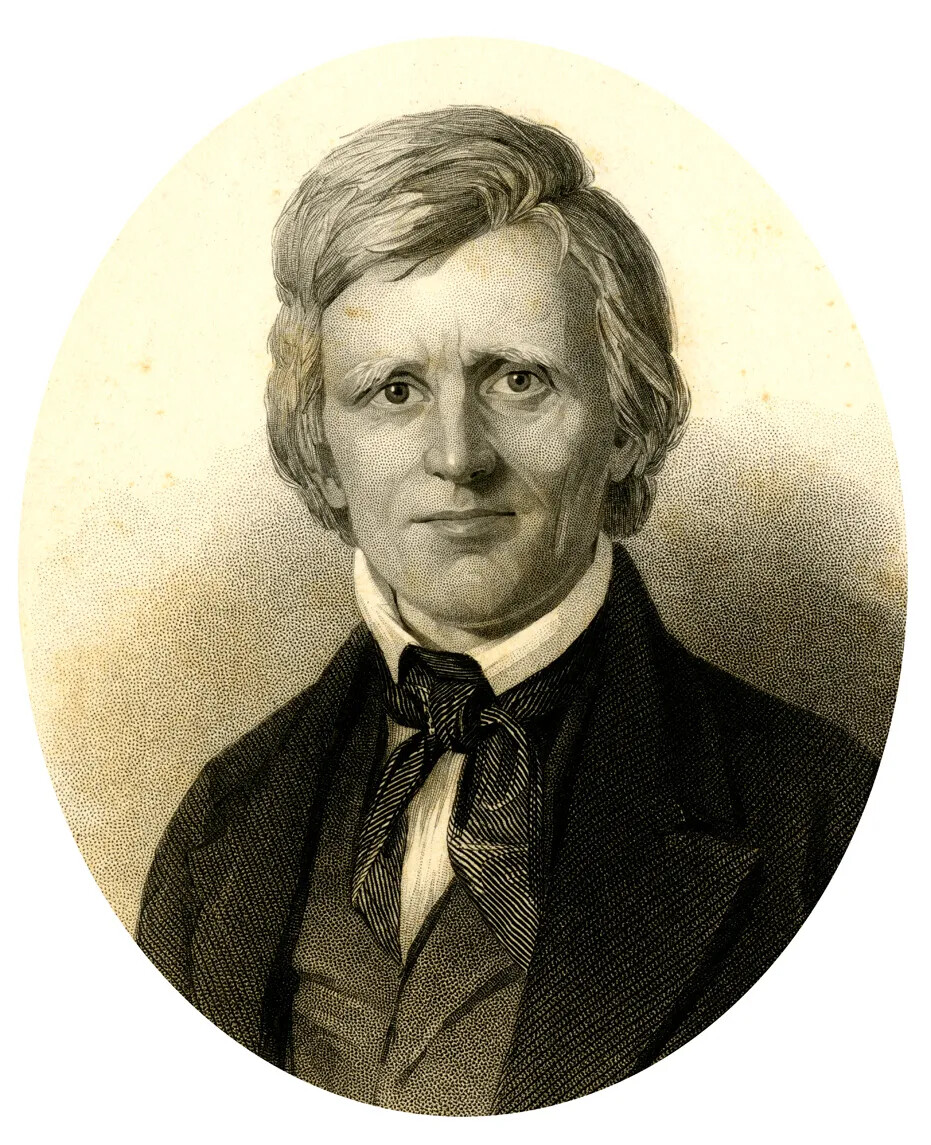
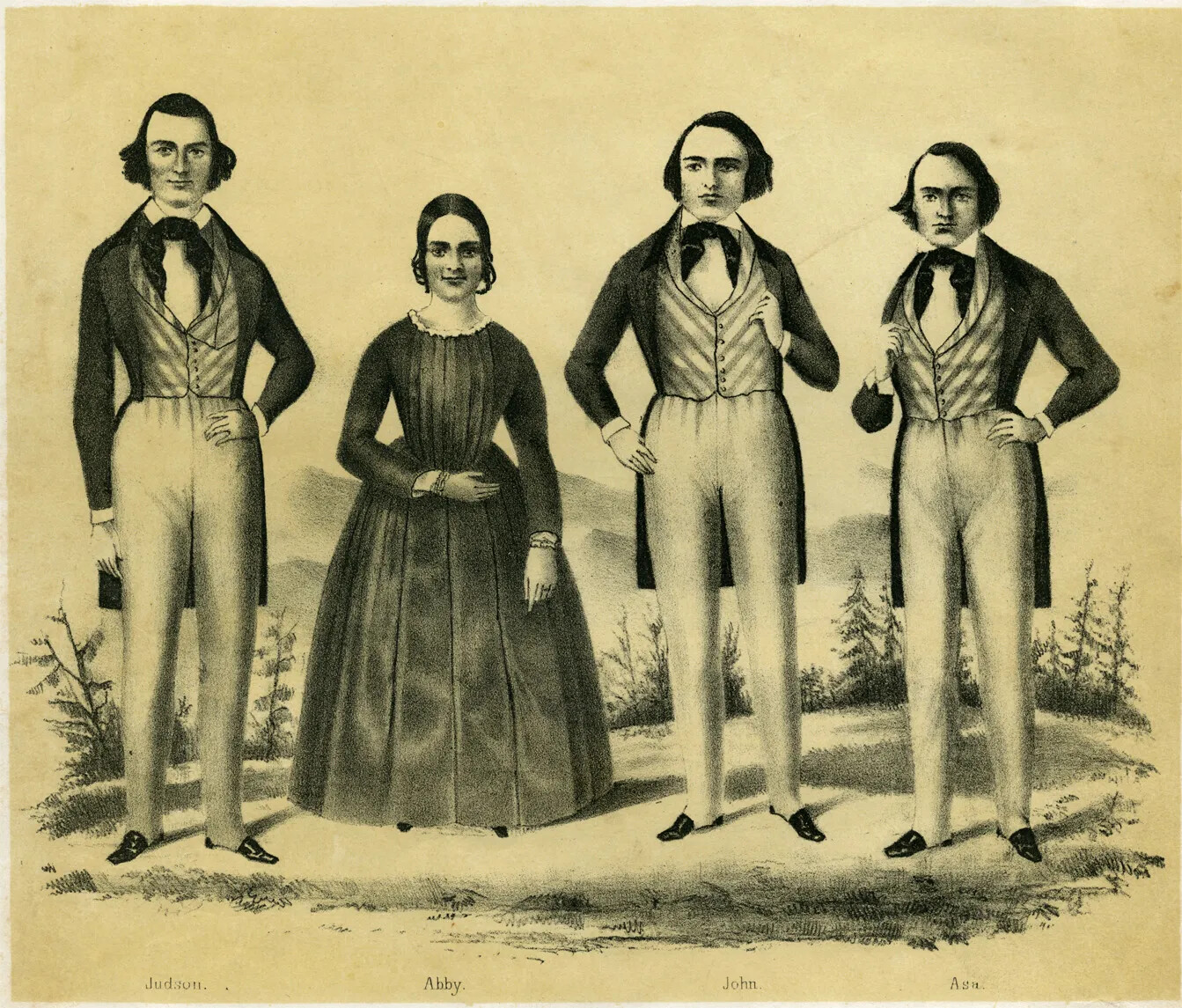
social problems
noun
Anything that has a negative impact on large numbers of people